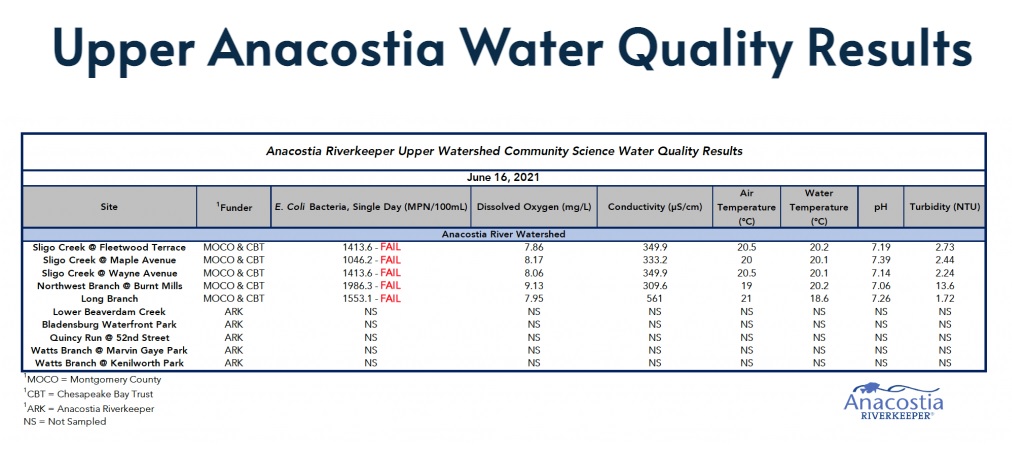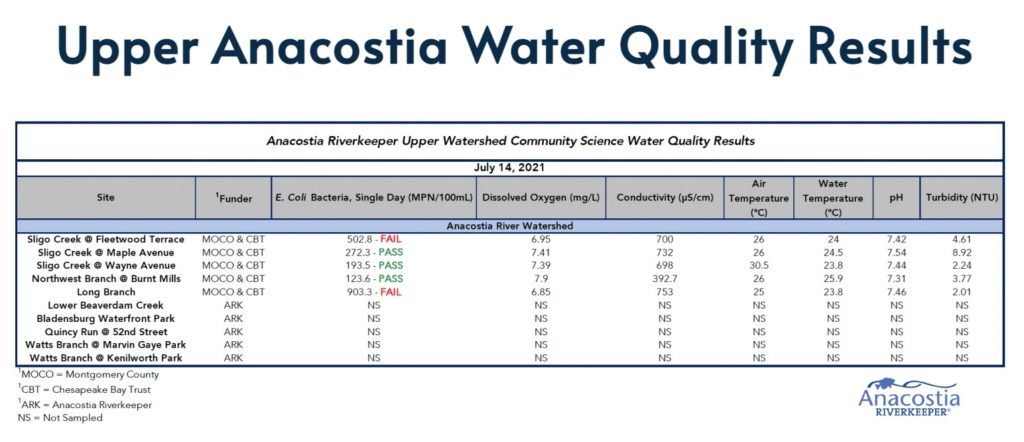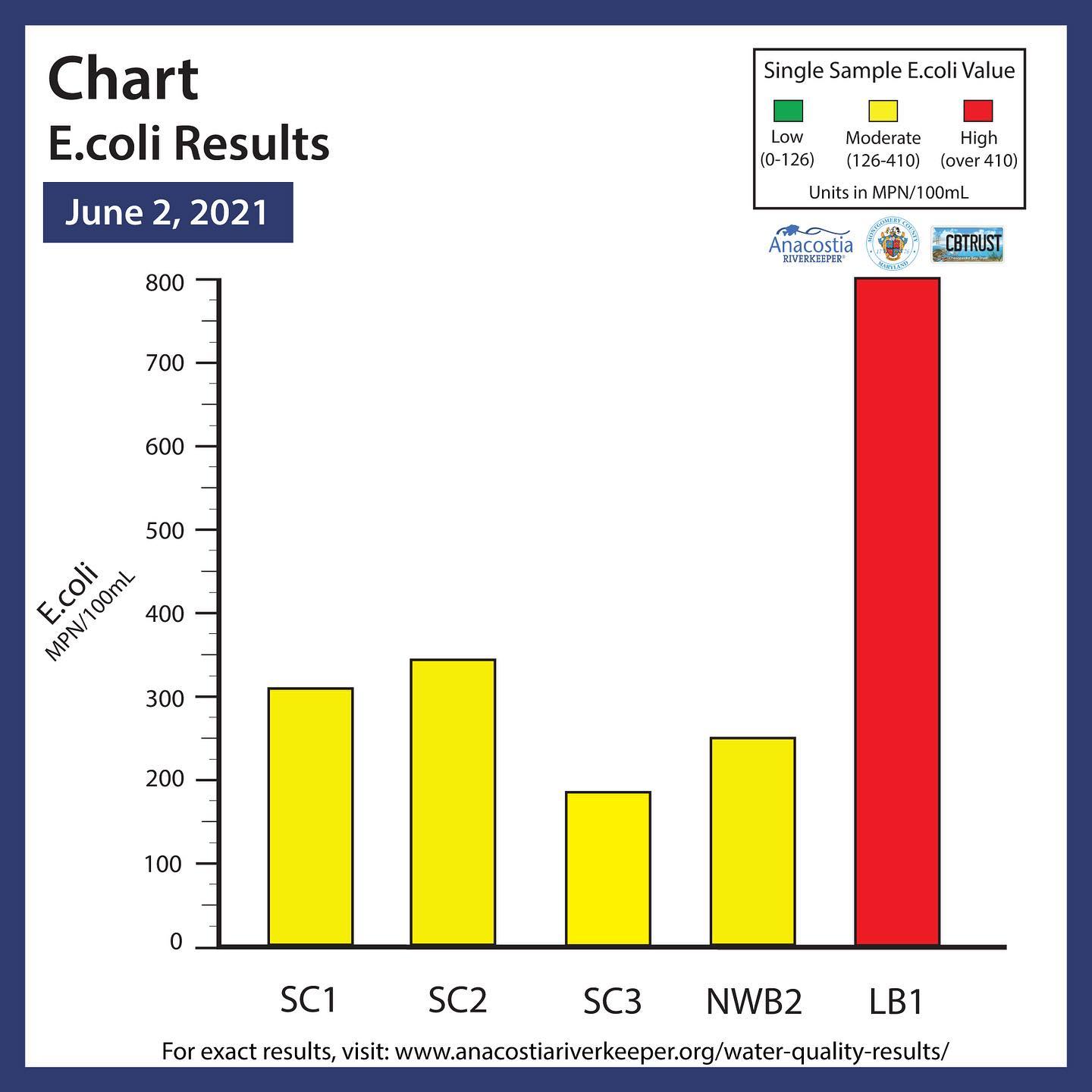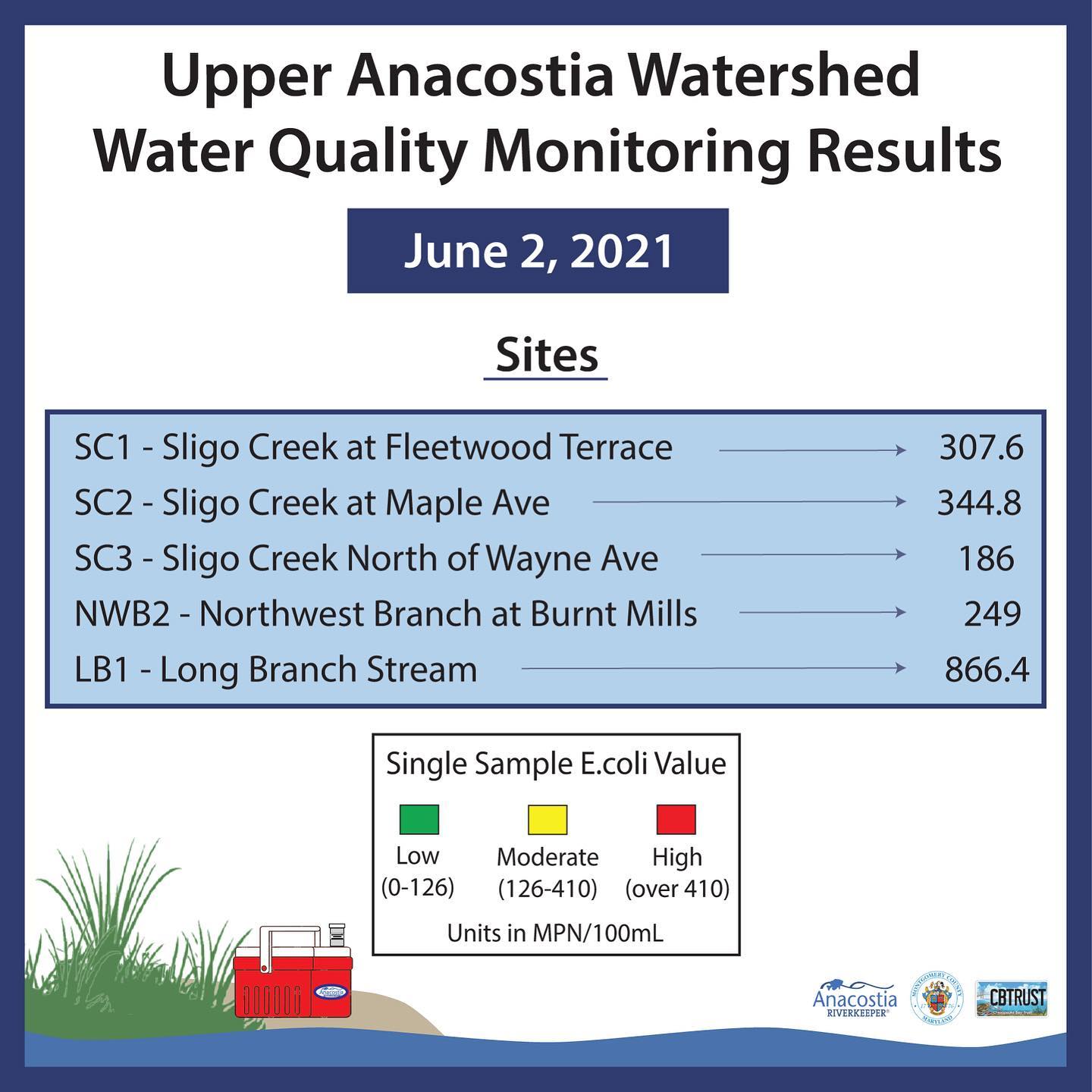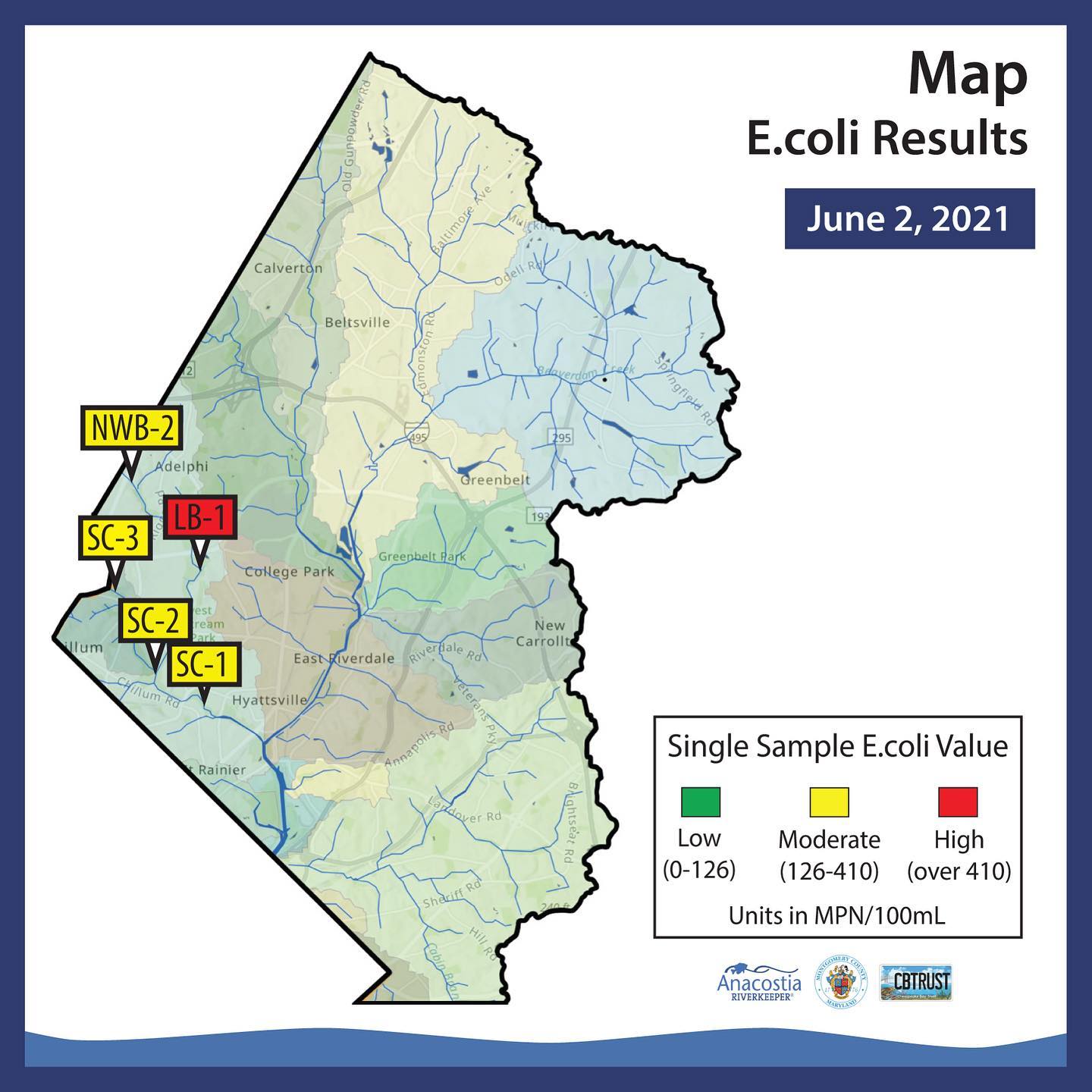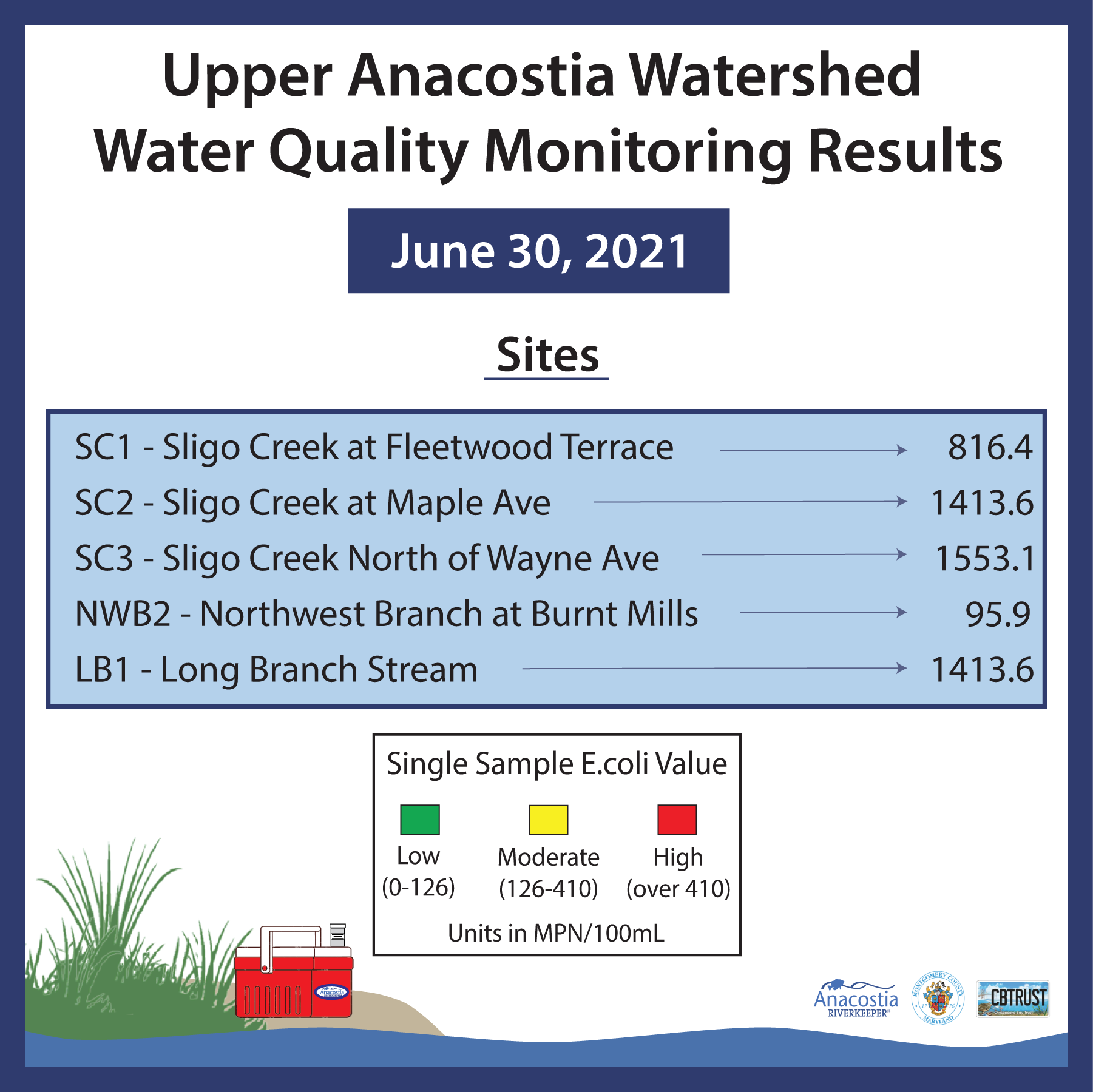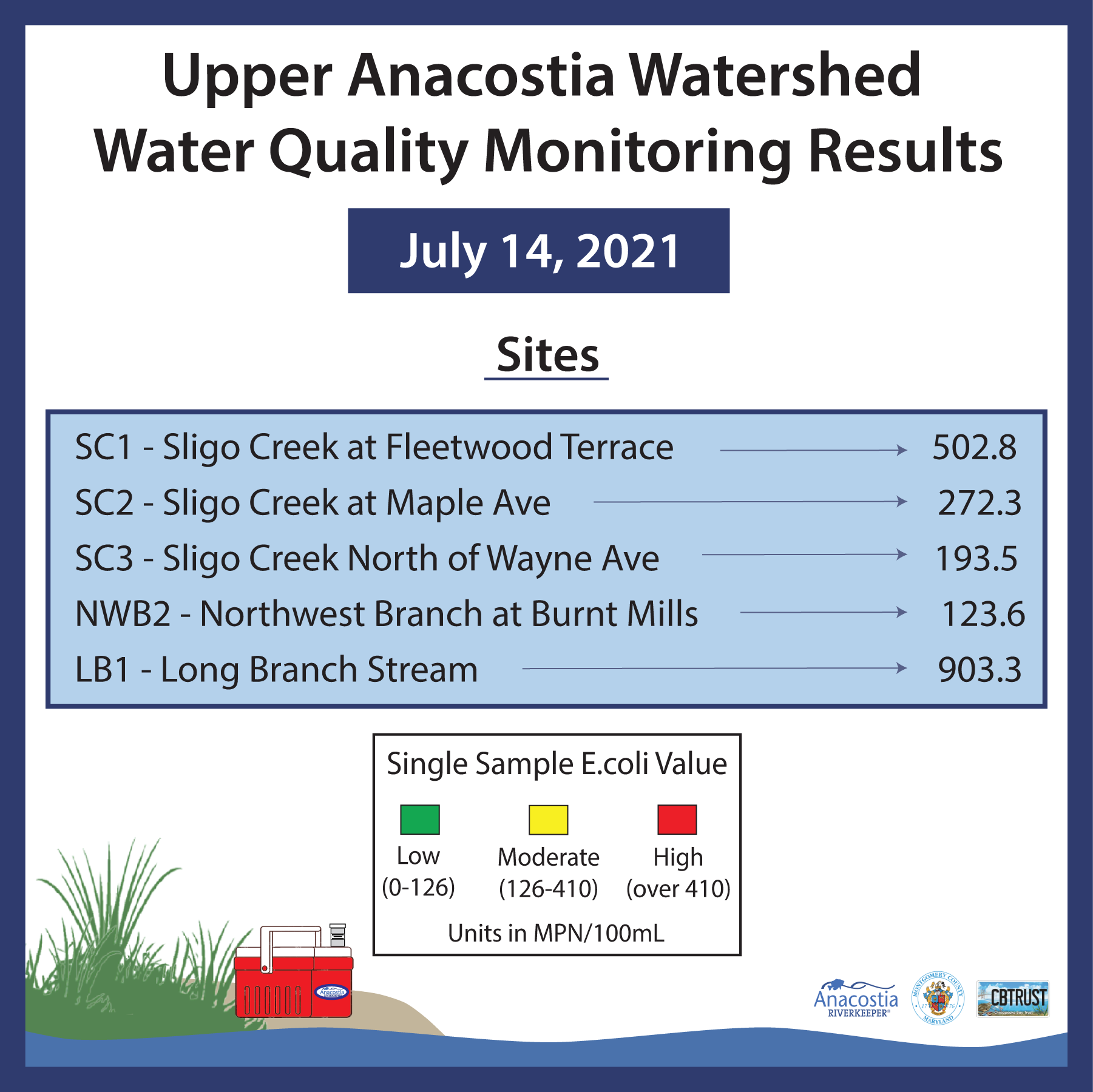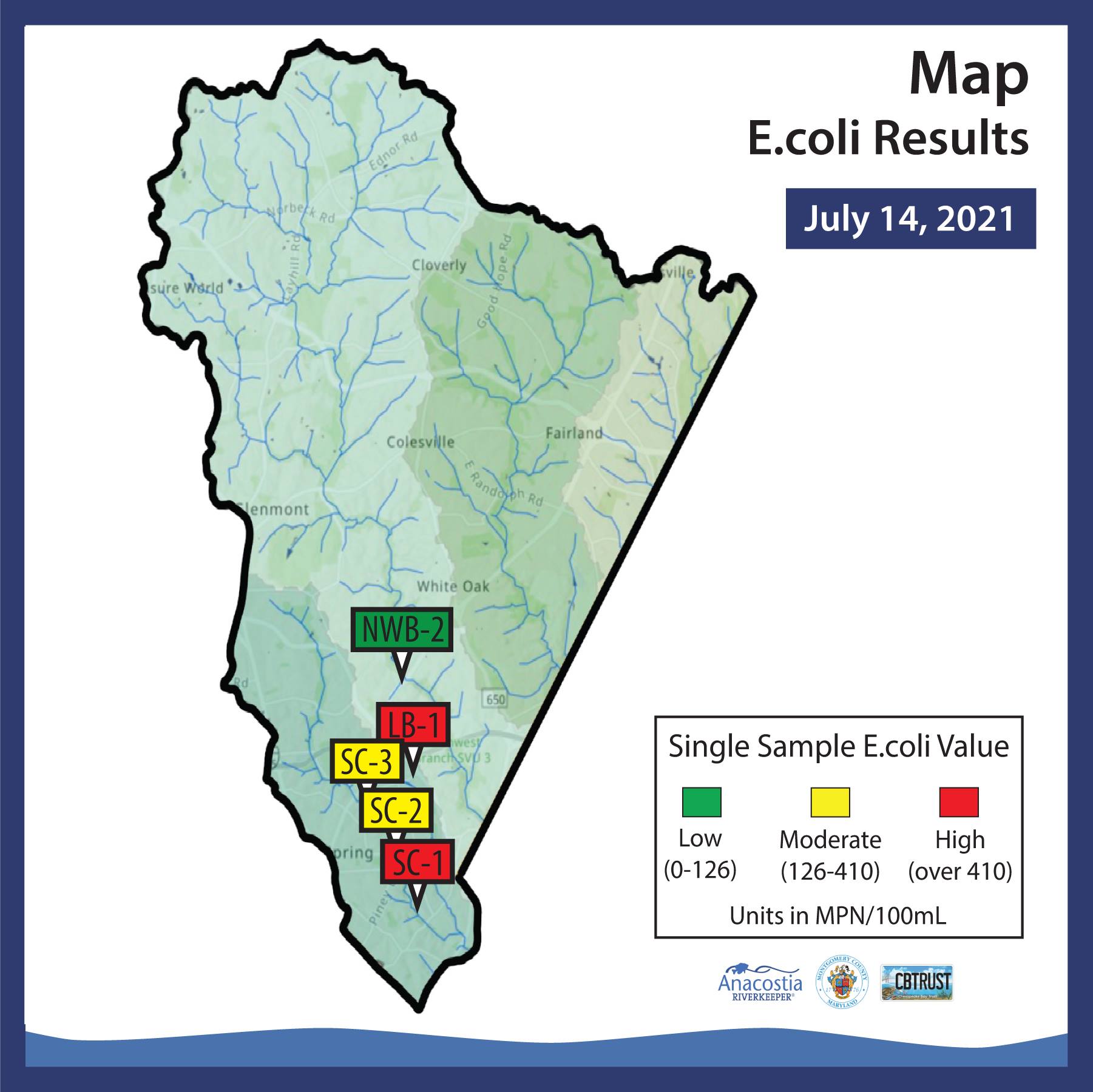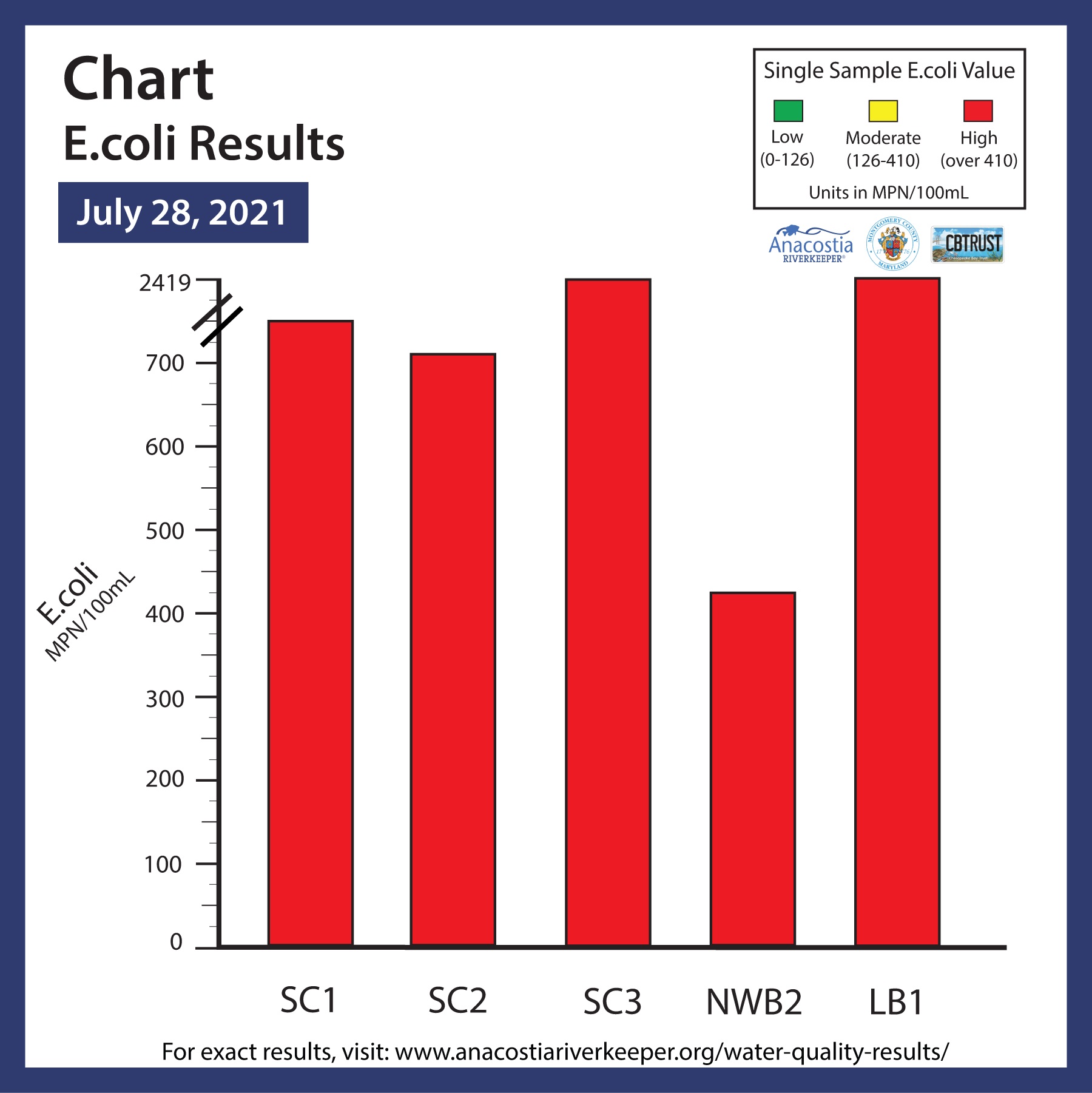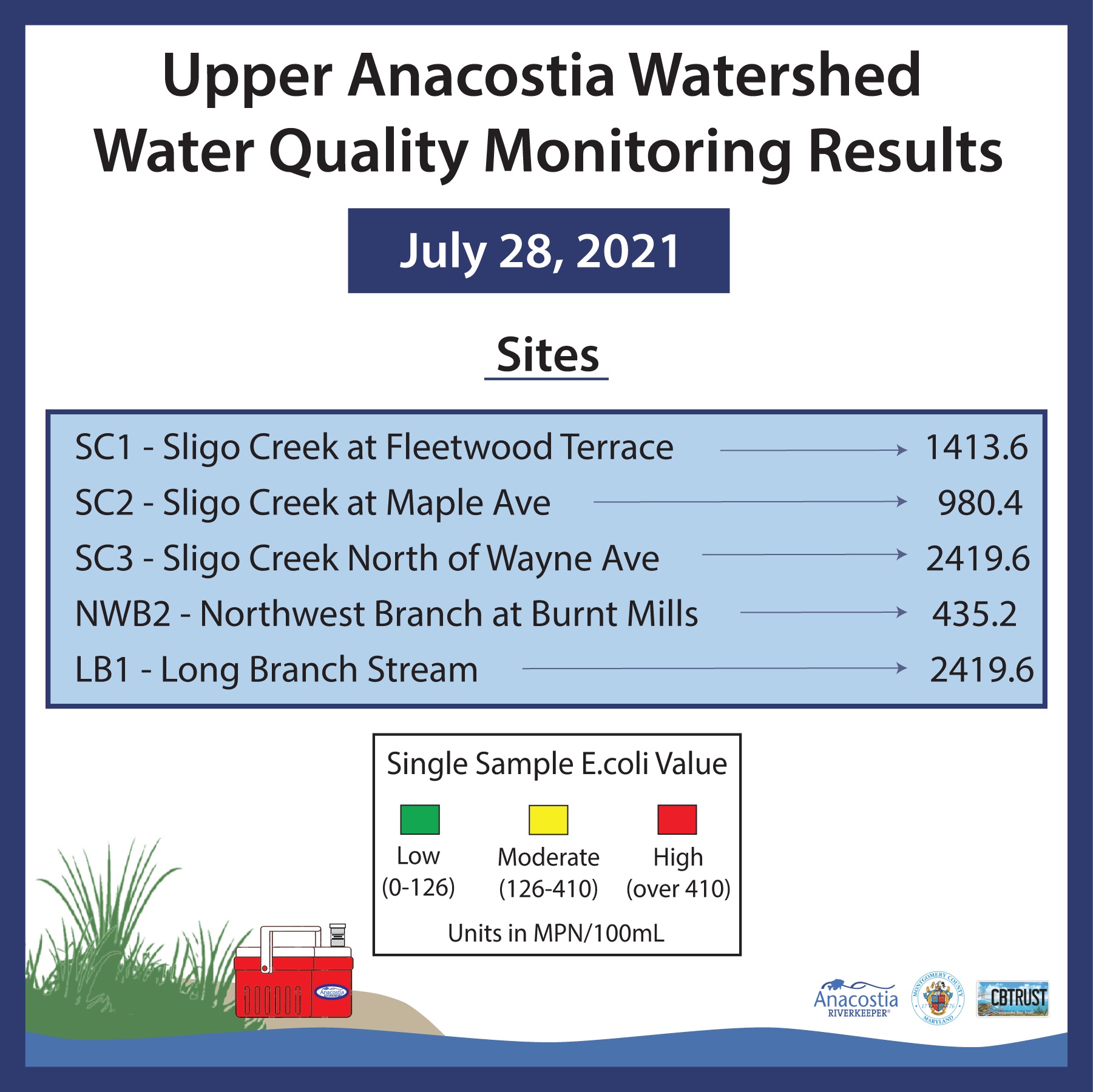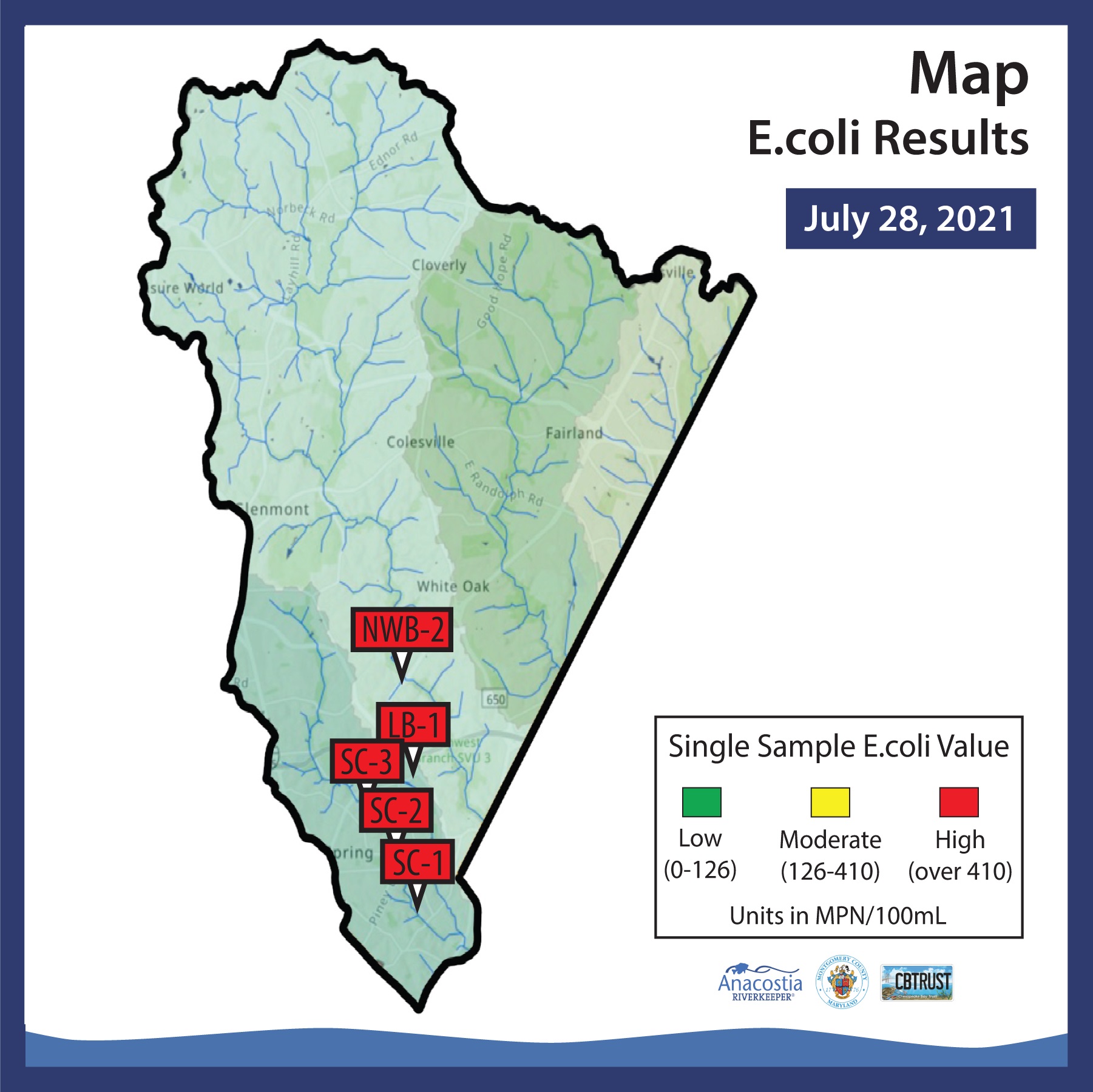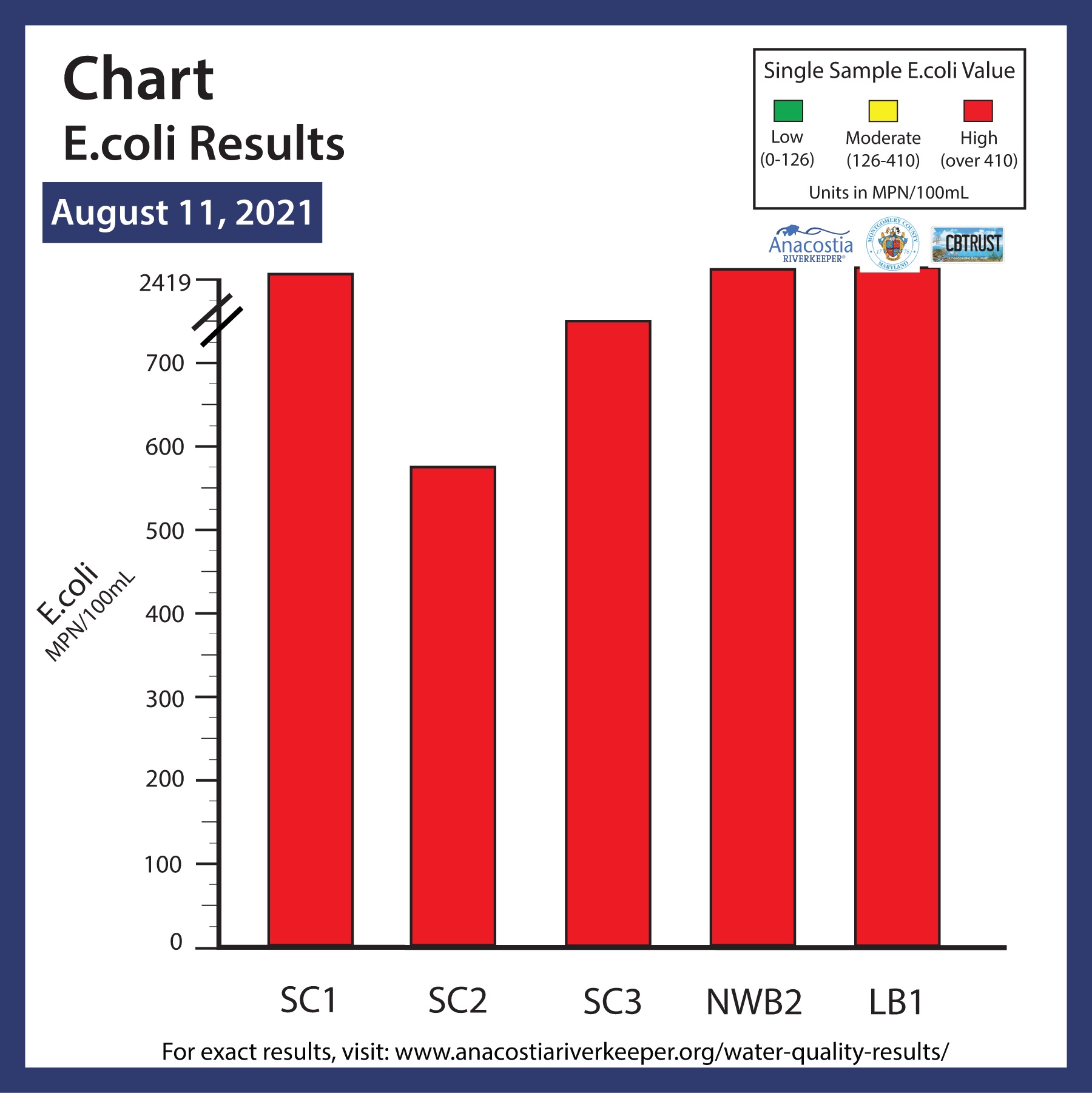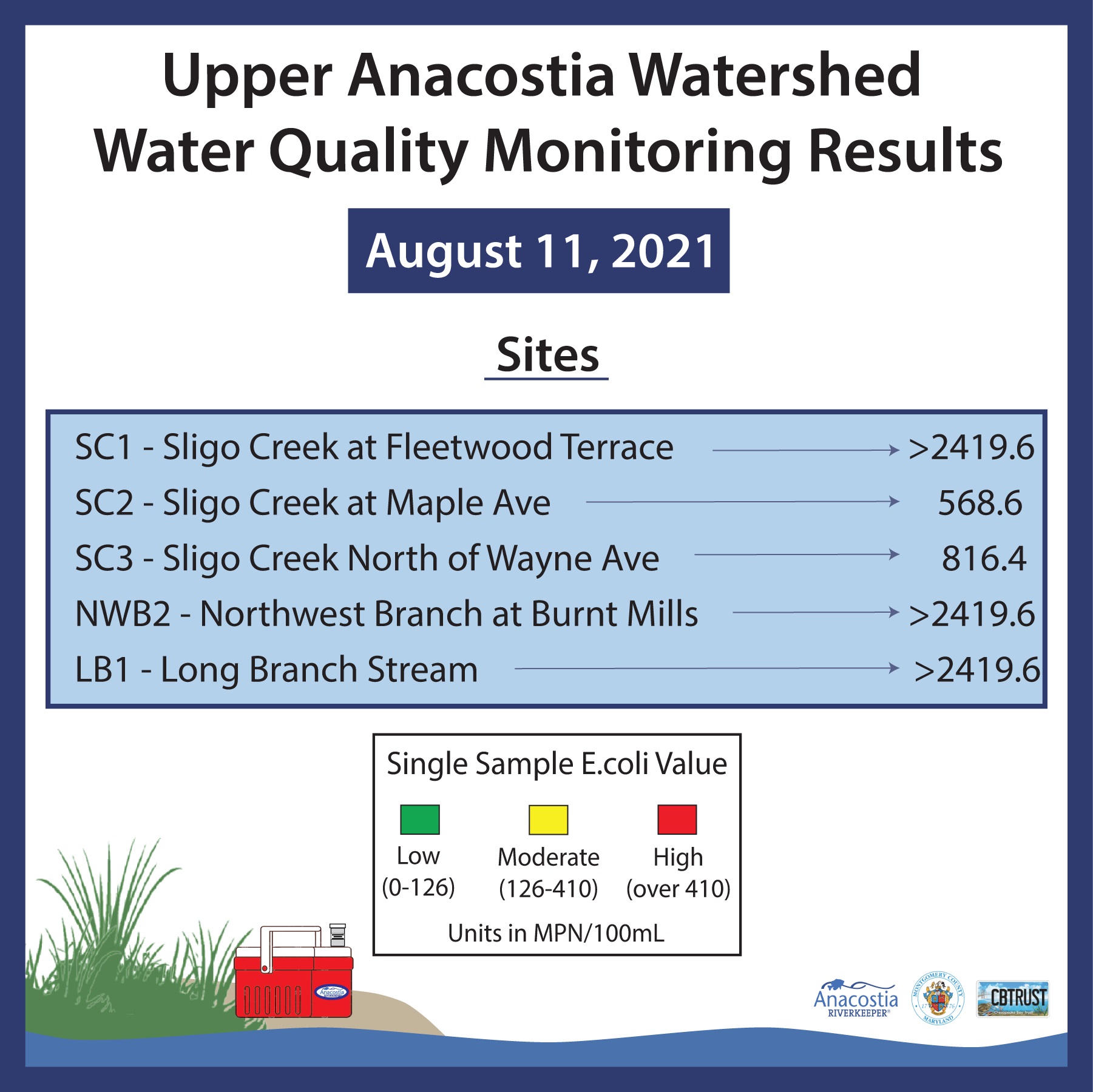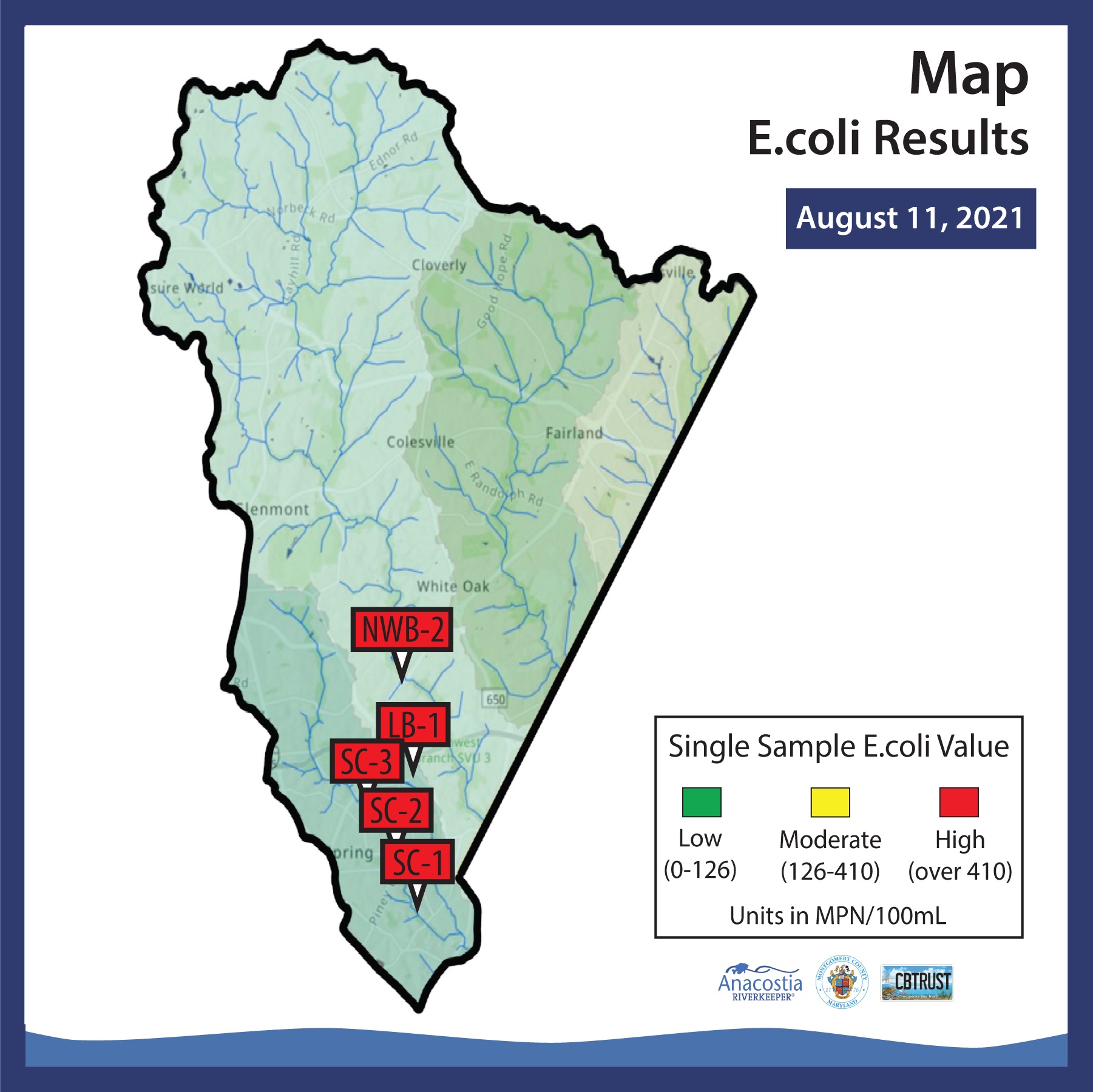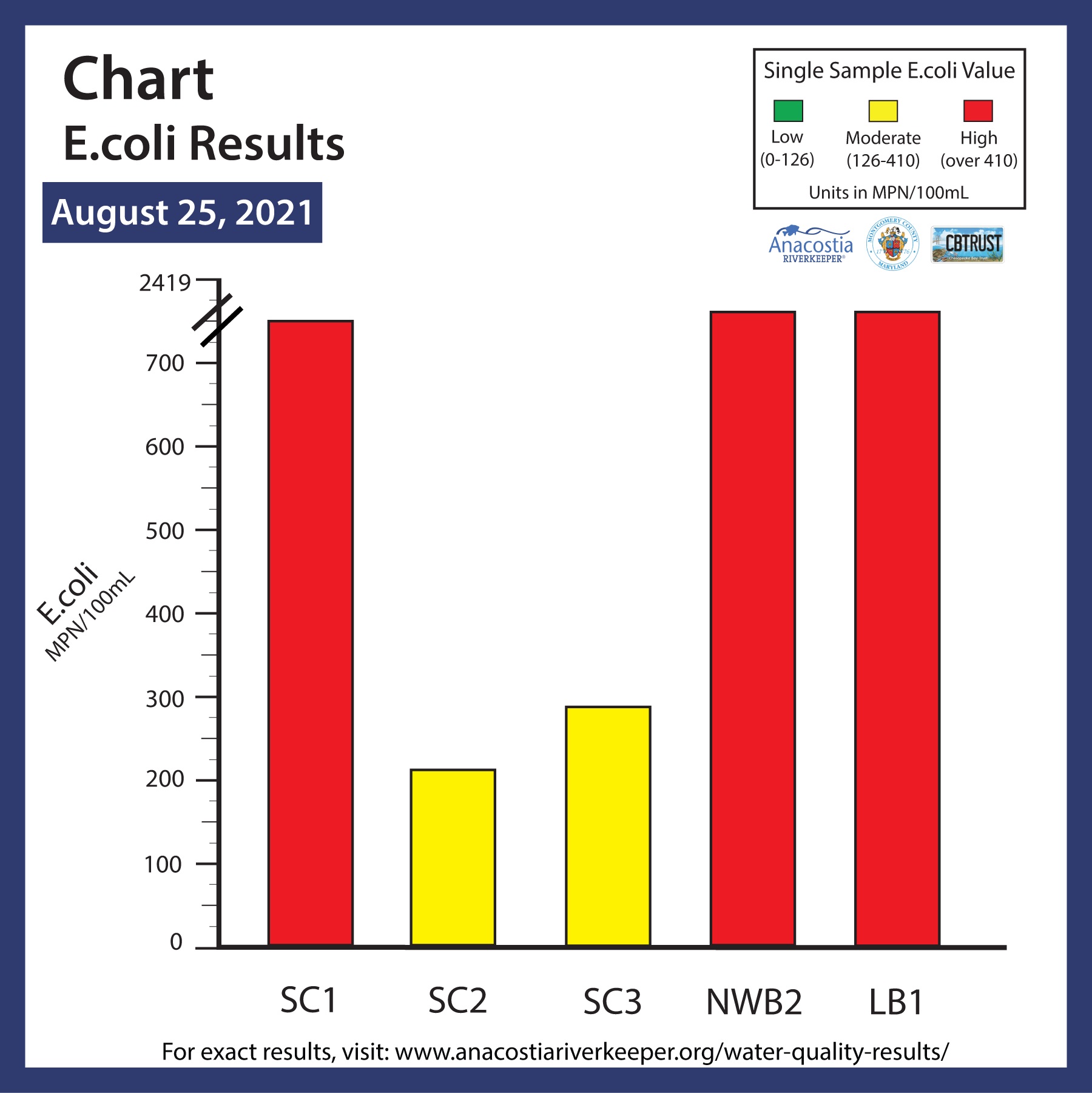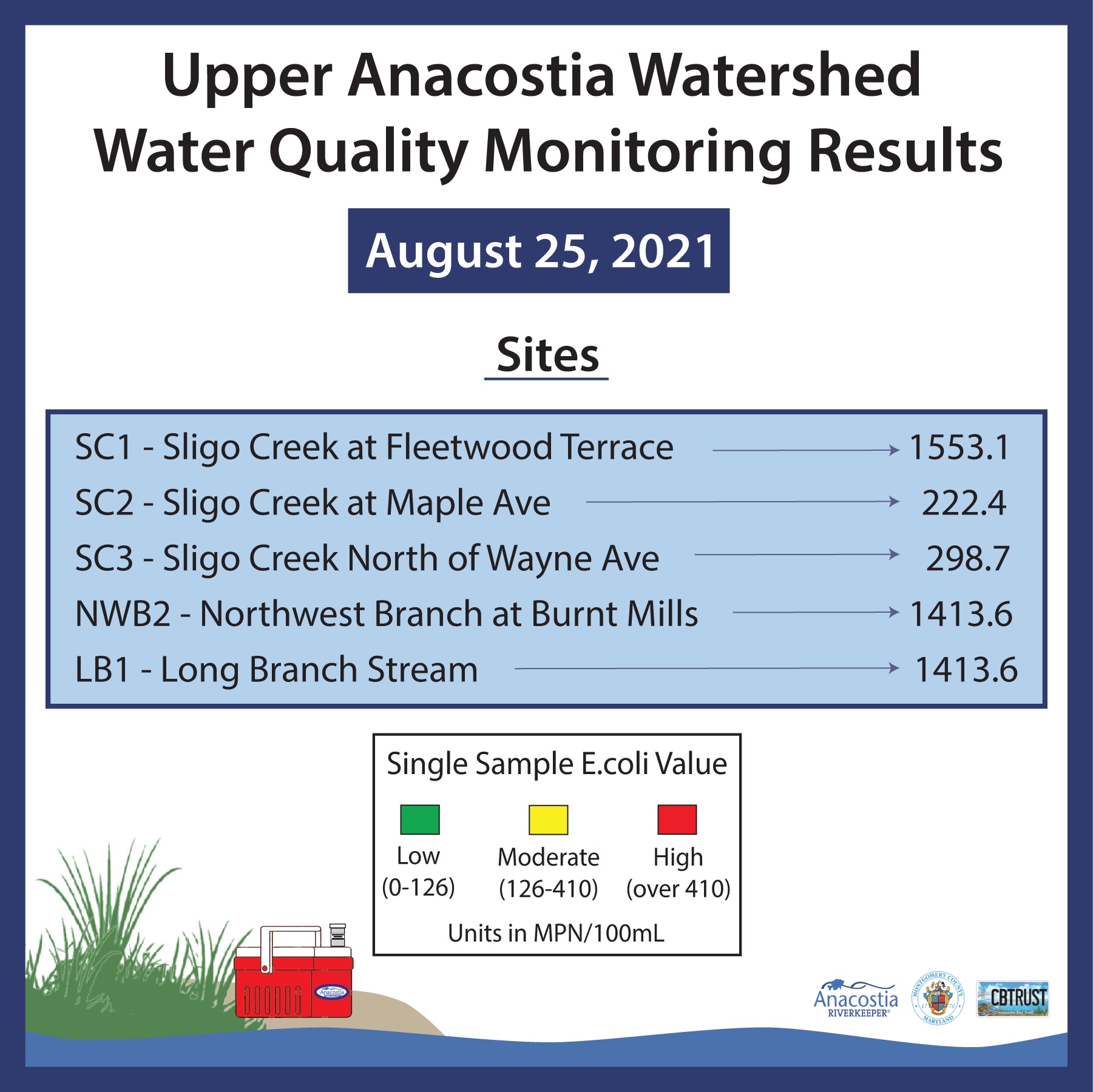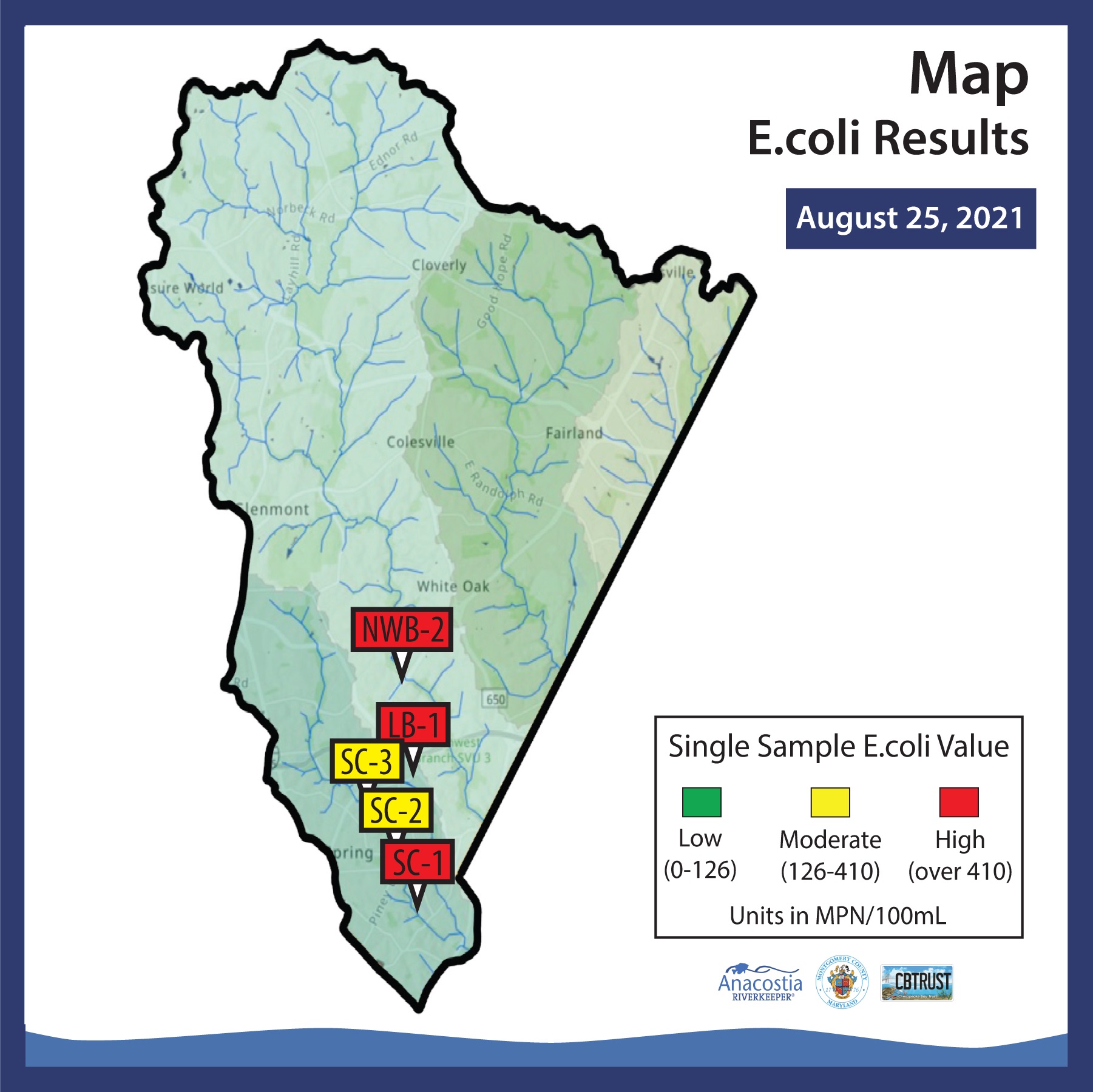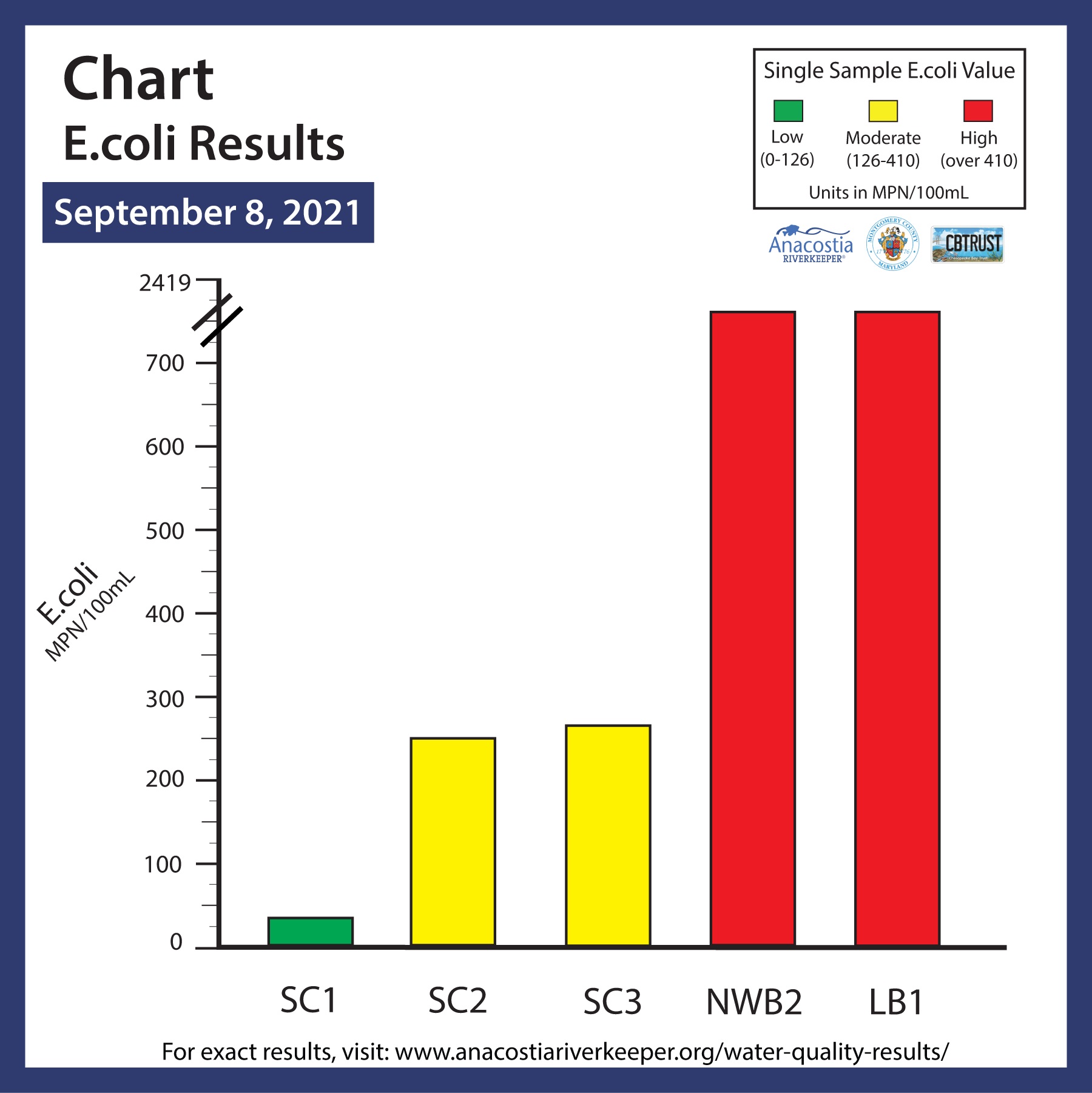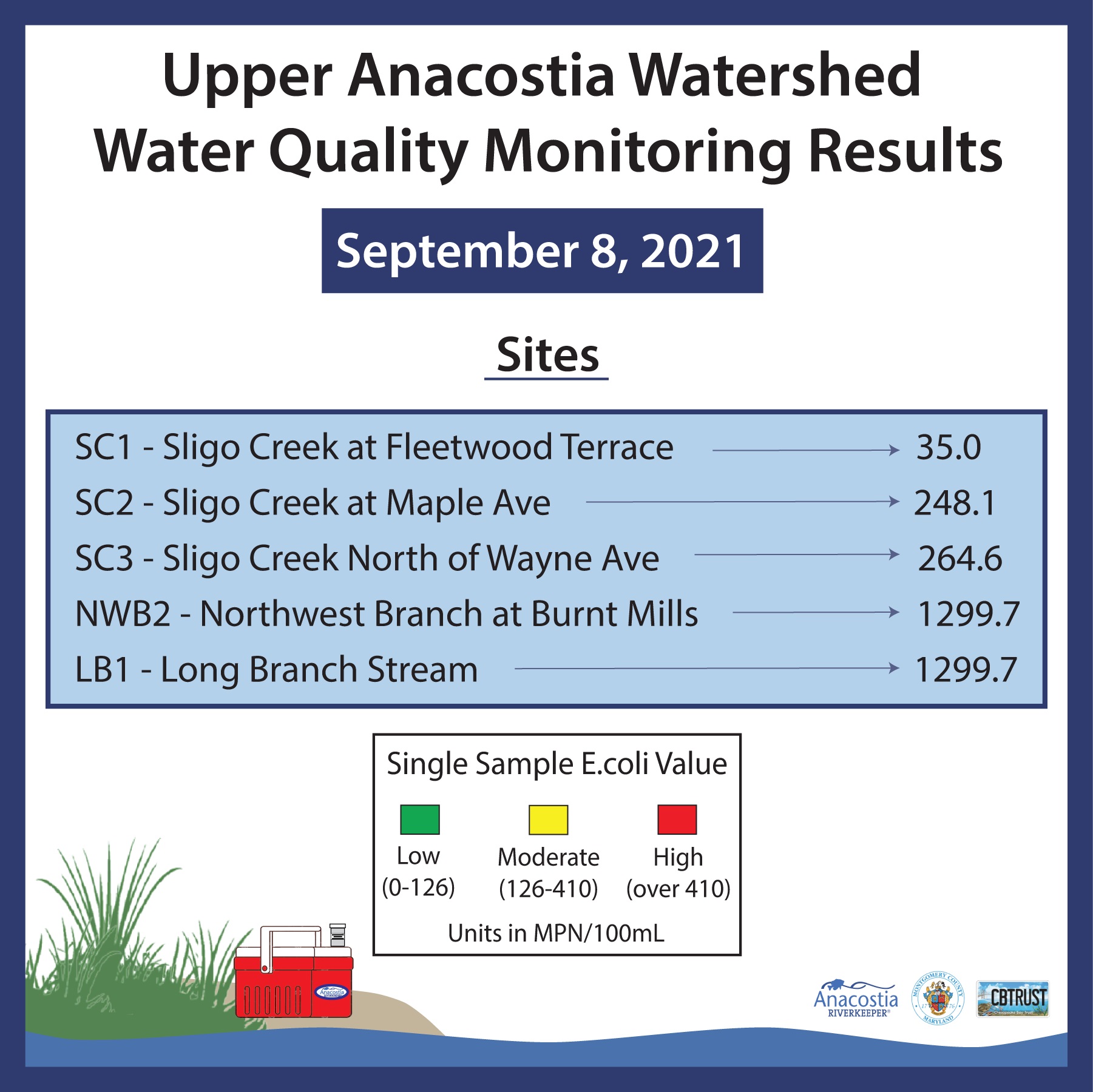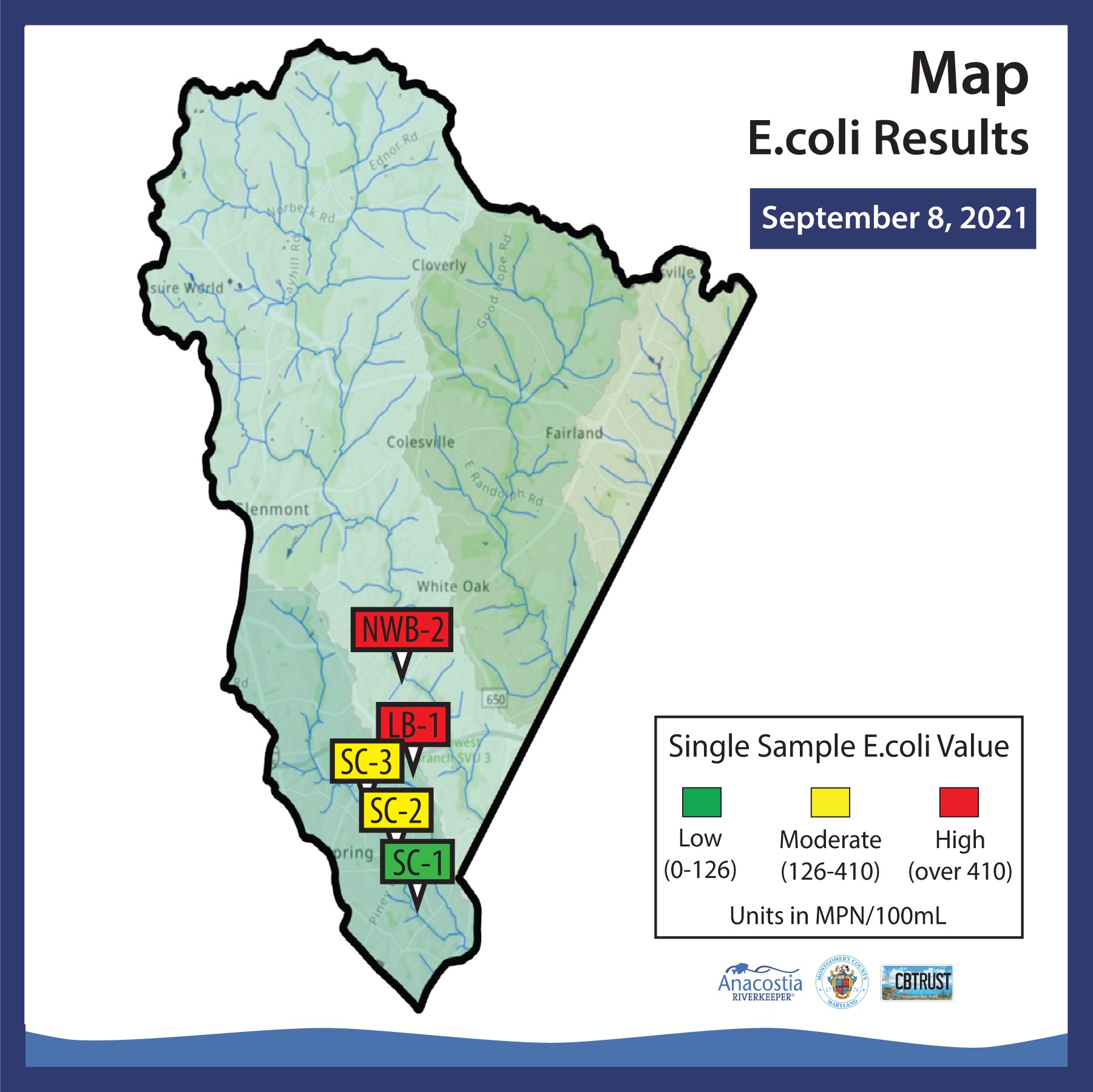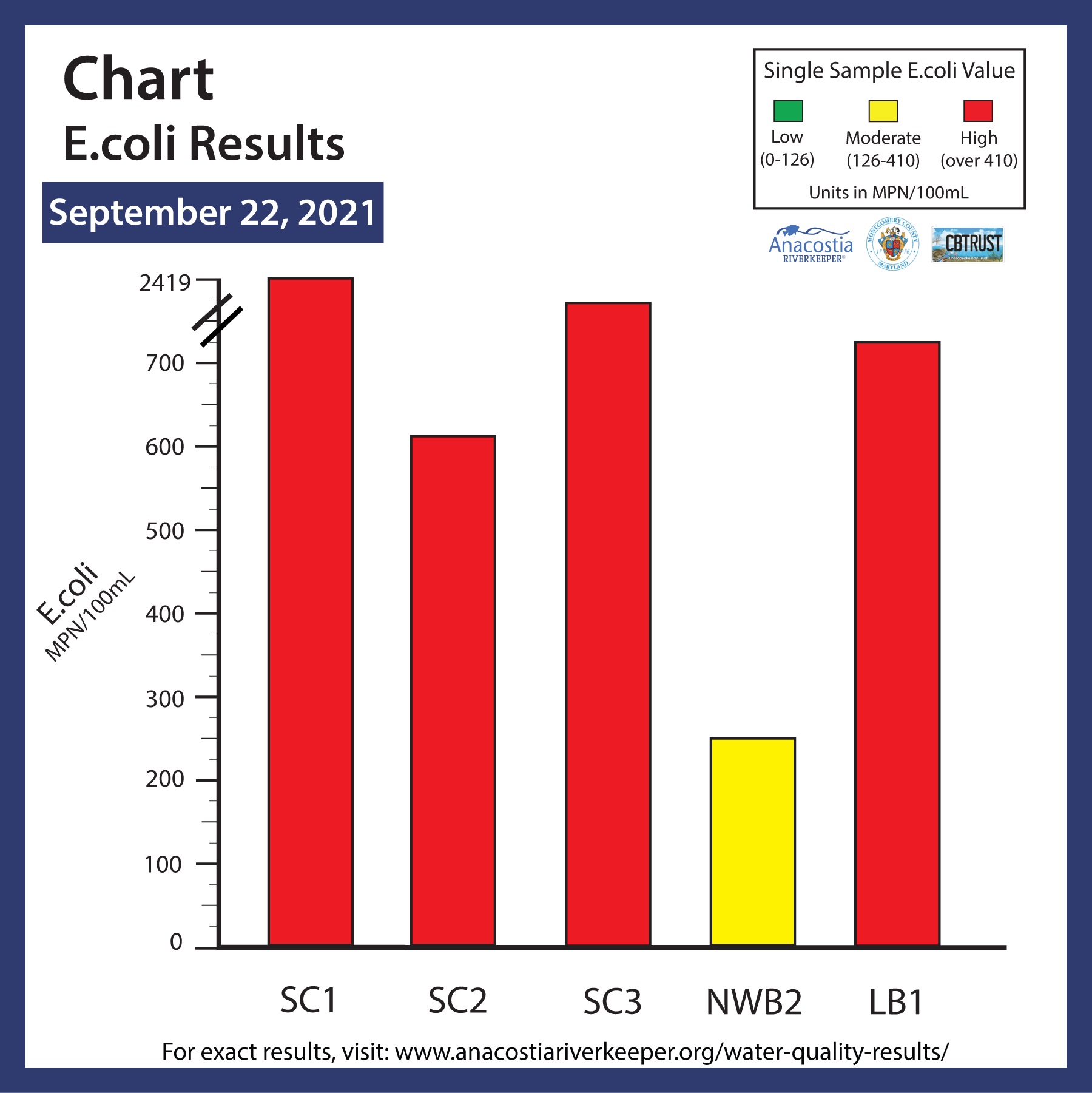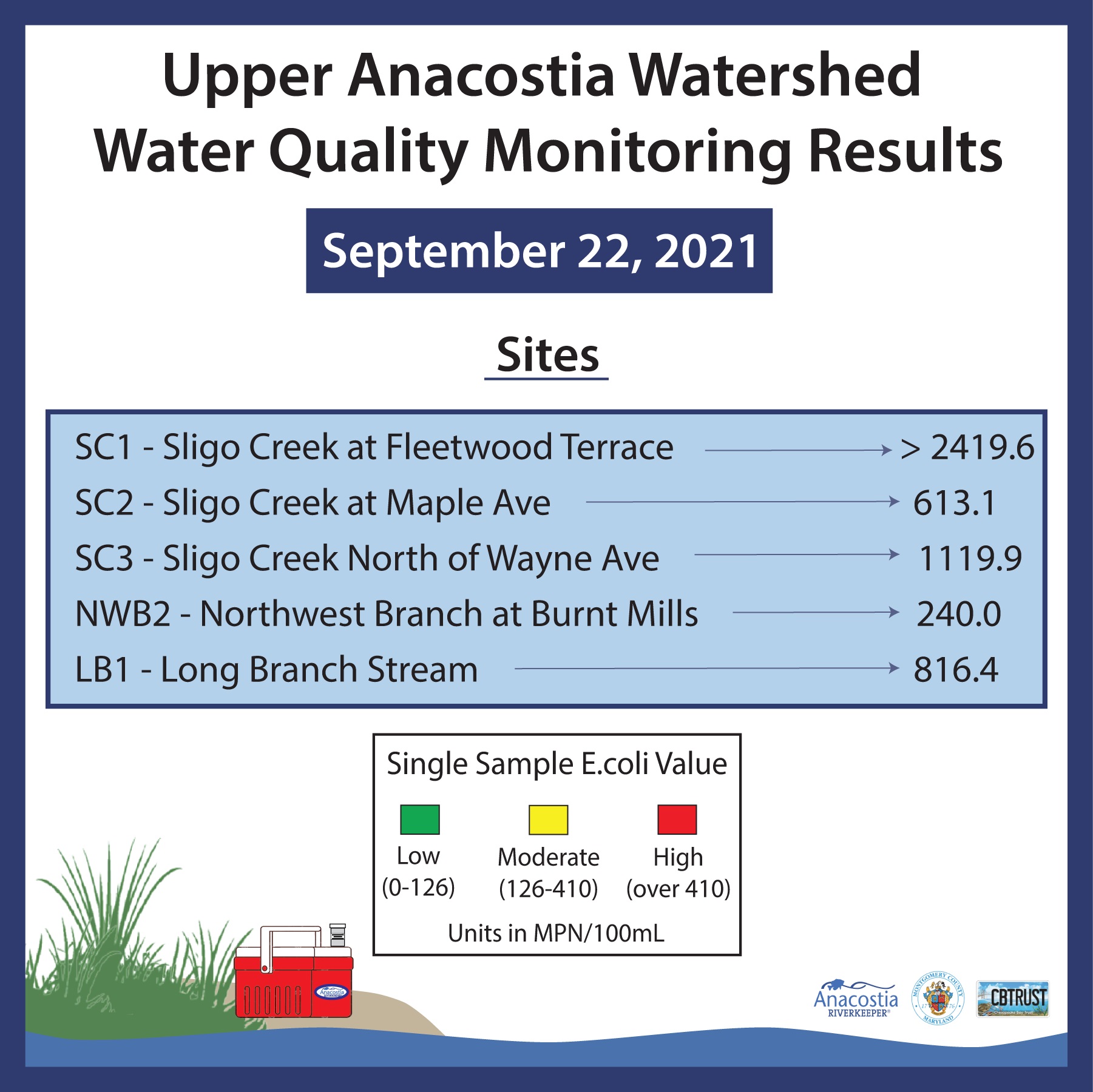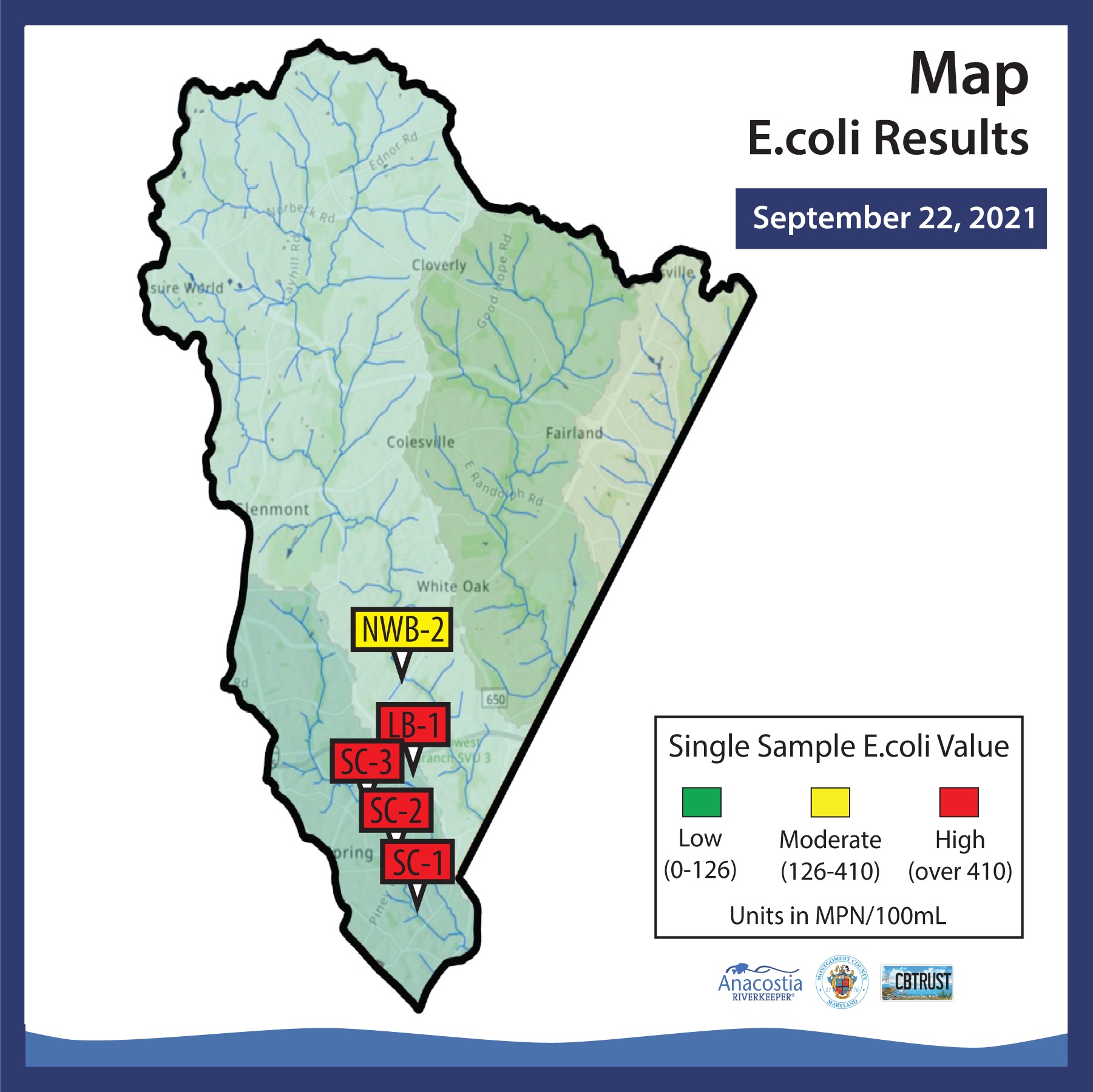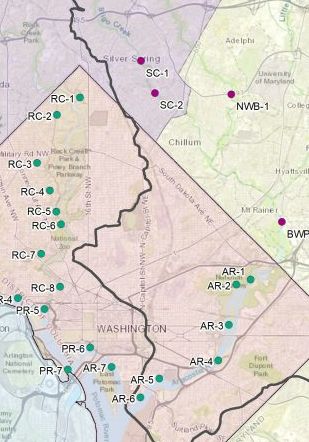ARK/FOSC Volunteer Water Quality Monitoring and Data
The 2023 Summer WQ Testing has finished for the season
With supplies in hand, Sligo and Long Branch volunteers again headed out this summer to test the waters, literally, at 3 sites in Sligo Creek and one in Long Branch. For the 3rd year, Anacostia Riverkeeper (ARK) partnered with FOSC to track the health of these two urban waterways.
This program offered a great experience in water quality field work. After a mandatory training session (see details below), volunteers measured water temperature, air temperature, dissolved oxygen, pH, and turbidity. They also collected water samples to be analyzed for E. coli bacteria, a key indicator of stream health, at the Anacostia Riverkeeper lab.
The results help ARK, FOSC, their partners, and the County get a better sense of Sligo Creek’s health during the summer, and helps build the scientific database for the Chesapeake Bay region’s waters.
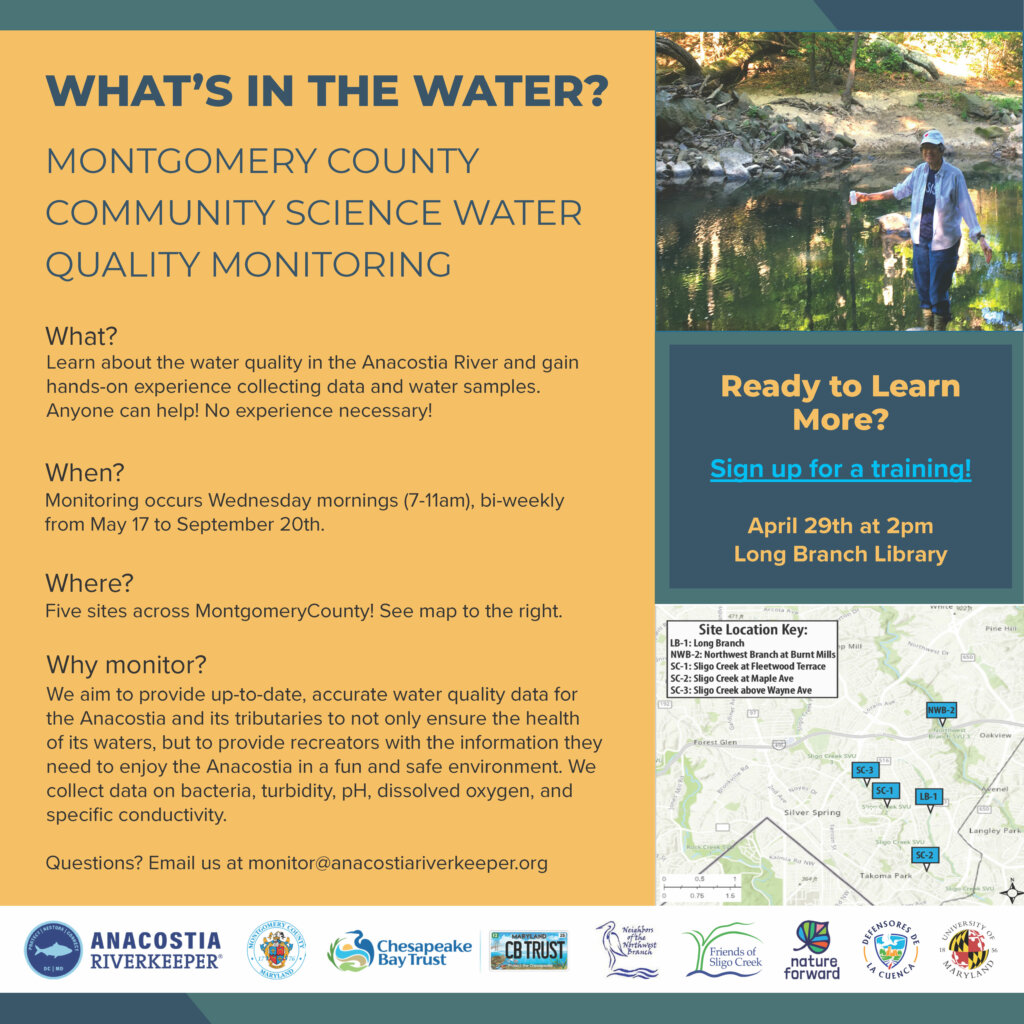
ARK runs this project region-wide, at 19 sites across DC, Montgomery, and Prince George’s counties, through partnerships with many local environmental groups, funded by the Chesapeake Bay Trust and these three counties.
The 2023 data to date:
The 2022 Summer Program
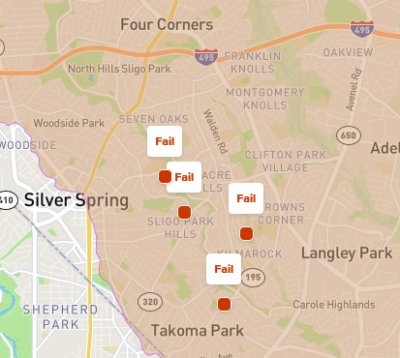
ARK and FOSC have four sites in the Sligo watershed included in the volunteer testing program this summer. They are, north to south:
- Sligo Creek at Wayne Ave
- Sligo Creek at Fleetwood
- Brashears Run near Sligo Creek at Maple Ave
- Long Branch at Rolling Terrace Elementary School
The ARK 2022 Moco Summary Report concludes that testing consistently showed high levels of bacteria that present risks to humans, even while parameters for aquatic wildlife, such as dissolved oxygen and pH were fairly healthy.
To see the data across MD & DC, visit the Anacostia Riverkeeper website.
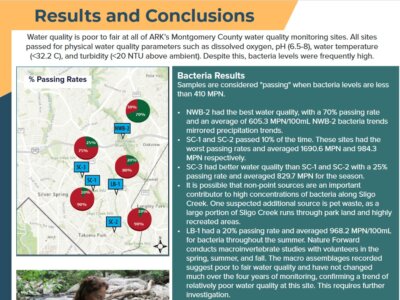
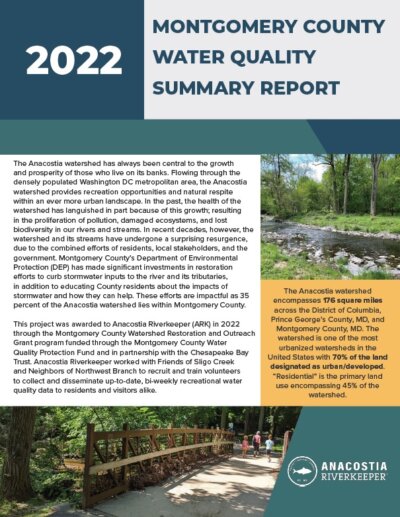
Tables, charts, maps and graphs courtesy of Anacostia Riverkeeper.
The 2021 Program Wrap Up
The Anacostia Riverkeeper/FOSC Volunteer Water Quality Monitoring program wrapped up in Sept 2021. In its second year, the program expanded to 3 sites on Sligo Creek and 1 on its Long Branch tributary. The Anacostia Riverkeeper (ARK) program includes a site on Northwest Branch and several other Anacostia watershed sites outside the Sligo watershed, plus the Rock Creek and Potomac river watersheds.
From June through September, volunteers measured water temperature, air temperature, pH, and dissolved oxygen at five sites in the Upper Anacostia Watershed, including three sites along Sligo Creek and 1 on Long Branch:
- near the Schuyler Road foot bridge at Sligo Creek Parkway;
- at the Sligo Creek Parkway parking lot just downstream of Wayne Avenue;
- in Takoma Park, at the confluence of Brashears Run and Sligo Creek near Maple Avenue.
- in Takoma Park on Long Branch at Rolling Terrace Elementary school.
Volunteers also collected water samples for further bacterial and turbidity analysis by ARK at its lab.
The FOSC data from the three Sligo Creek monitoring sites and the Long Branch site are shown below and on TheSwimGuide.org at beach/1055, beach/9615, and beach/9616. Biweekly results (see below) for the ARK/FOSC program are prepared by Robbie O'Donnell, Watershed Programs Manager at ARK, and are posted below and on the ARK website.
In brief, the 2021 data indicate that while Sligo Creek is well-oxygenated and the water is clear, its coliform bacteria levels typically do not meet levels deemed safe for contact, and it carries a heavier dissolved ion load (it’s saltier) than we’d like to see in a freshwater stream.
ARK combines the data from the summer Upper Anacostia program with its other area monitoring efforts, providing agencies and administrators with a better picture of the ecological health of the Anacostia, including any trends that appear to be taking shape. The data from all of the Anacostia tributary and main river sites in MD and DC is available on the Anacostia Riverkeeper website.
The FOSC Water Quality Monitoring team is active year round. Please contact Pat Ratkowski at [email protected] to learn more about FOSC's WQ testing program and how to join the team.
The 2021 Montgomery County Data
The Montgomery County below is posted by date. Data for Prince George's County was not collected in 2021.
Tables, charts, maps and graphs courtesy of Anacostia Riverkeeper.
The 2020 program
September 2020 saw the successful conclusion of the summer's new citizen science water quality monitoring program. Friends of Sligo Creek partnered with Anacostia Riverkeeper, Alliance for the Chesapeake Bay, Corazon Latino, and Friends of Lower Beaverdam Creek on a new volunteer-centric water quality monitoring program funded by the National Fish and Wildlife Foundation. COVID-19 shortened this year’s monitoring season, which was to have run from late June through late September.
Every other Wednesday morning, volunteers measured water temperature, air temperature, pH, and dissolved oxygen at two sites along Sligo Creek: in Silver Spring near the parking pull-off along Sligo Creek Parkway just downstream of Wayne Avenue, and at the confluence of Brashears Run and Sligo Creek in Takoma Park. They also collected and delivered water samples to Anacostia Riverkeeper for further bacterial and turbidity analysis at its lab. Volunteers at the Sligo Creek sites included Elinor Colbourn, Alan Abrams, Gwen Sletten, Eliza Reed, Jacob Konick and Ally Ratkowski-Howe.
2020 Findings
In brief, the 2020 data indicate that while Sligo Creek is well-oxygenated and usually quite clear (there is very little suspended sediment in the water), its coliform bacteria levels typically do not meet levels deemed safe for contact, and it carries a larger dissolved ion load than most of the other waterways in the study.
Two locations in Sligo Creek were selected for monitoring, labeled SC-1 and SC-2 on the map:
(1) SC-1 is between Wayne Ave. and Piney Branch Rd., near the parking pull-off along Sligo Creek Parkway; and
(2) SC-2 is near the first parking lot on Sligo Creek Parkway downstream from Maple Ave.
Photos showing both locations were posted on the websites of Anacostia River Keeper and Friends of Sligo Creek. The sites themselves were marked by orange tape tied to nearby trees.
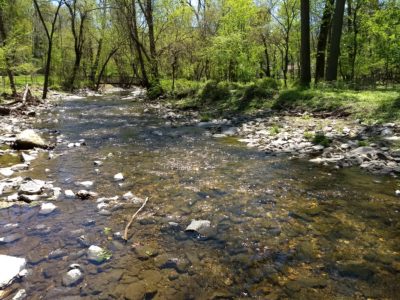
SC-1 Fleetwood Terrace testing site



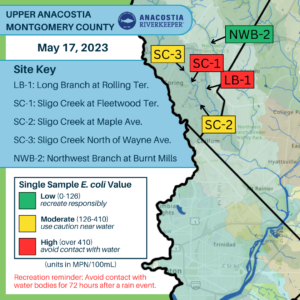
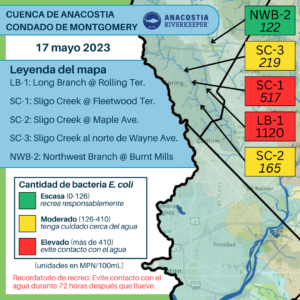
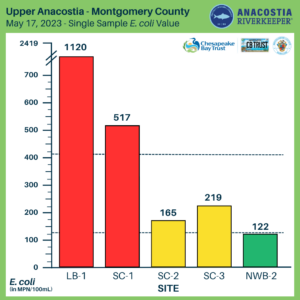
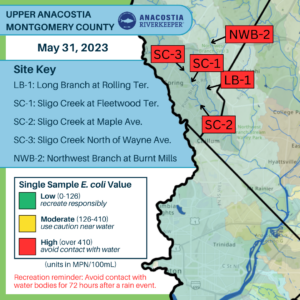
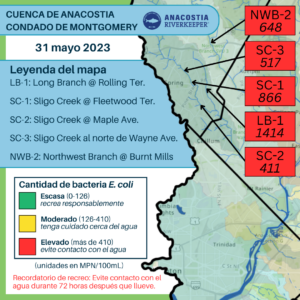
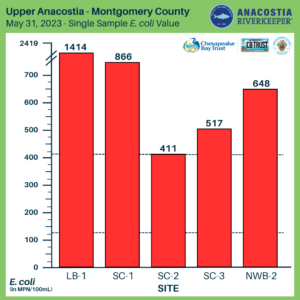
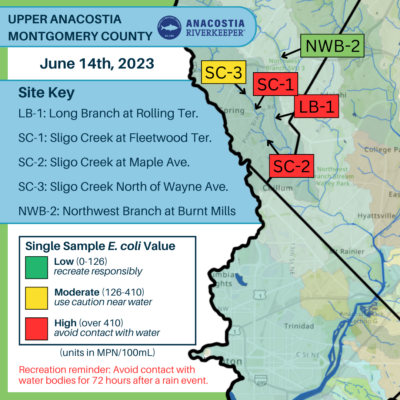
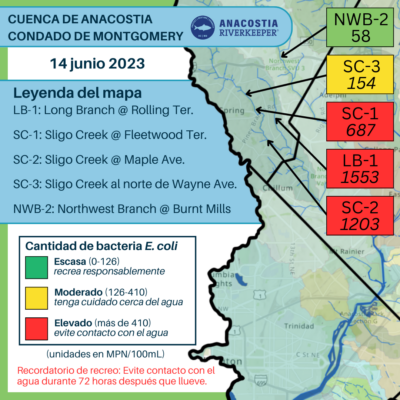
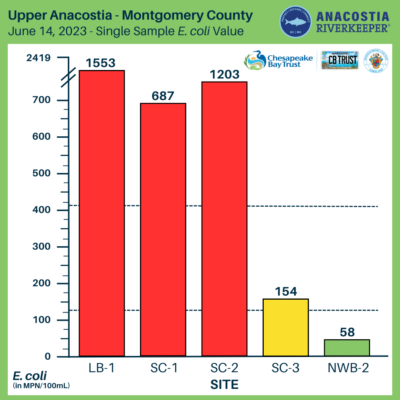
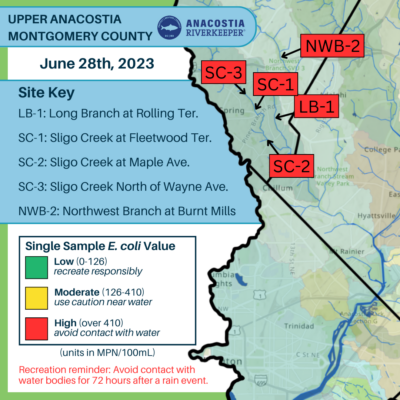
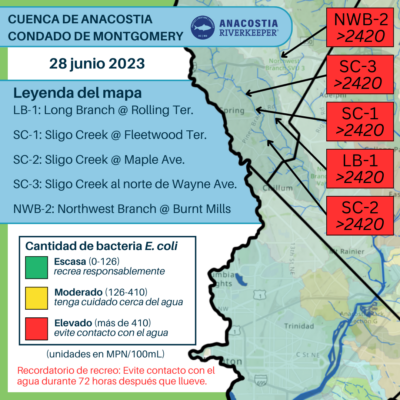
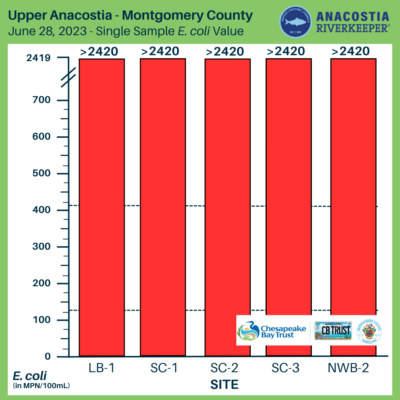
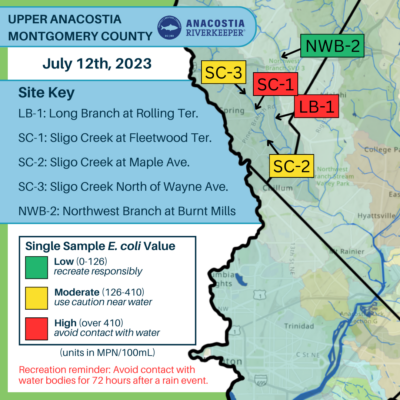
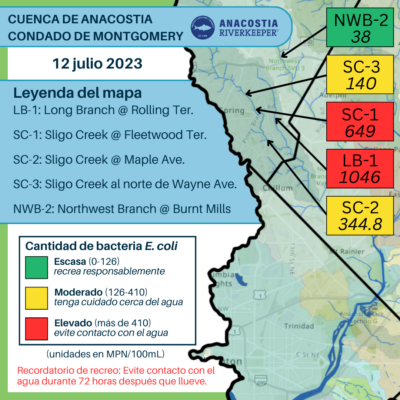
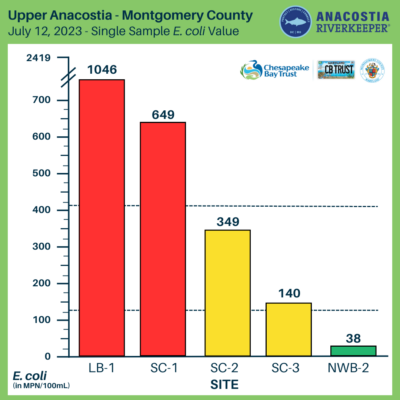
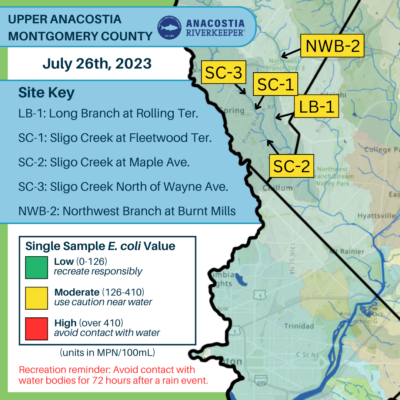
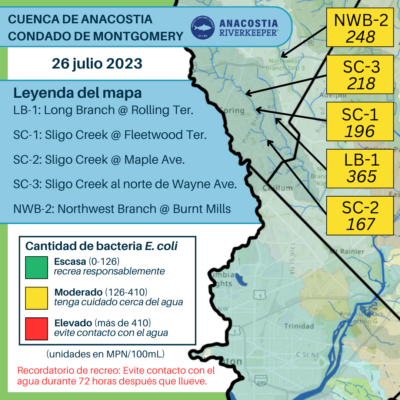
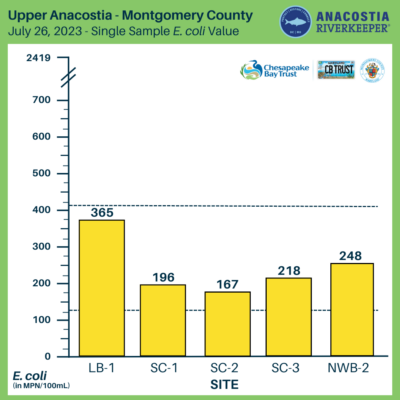
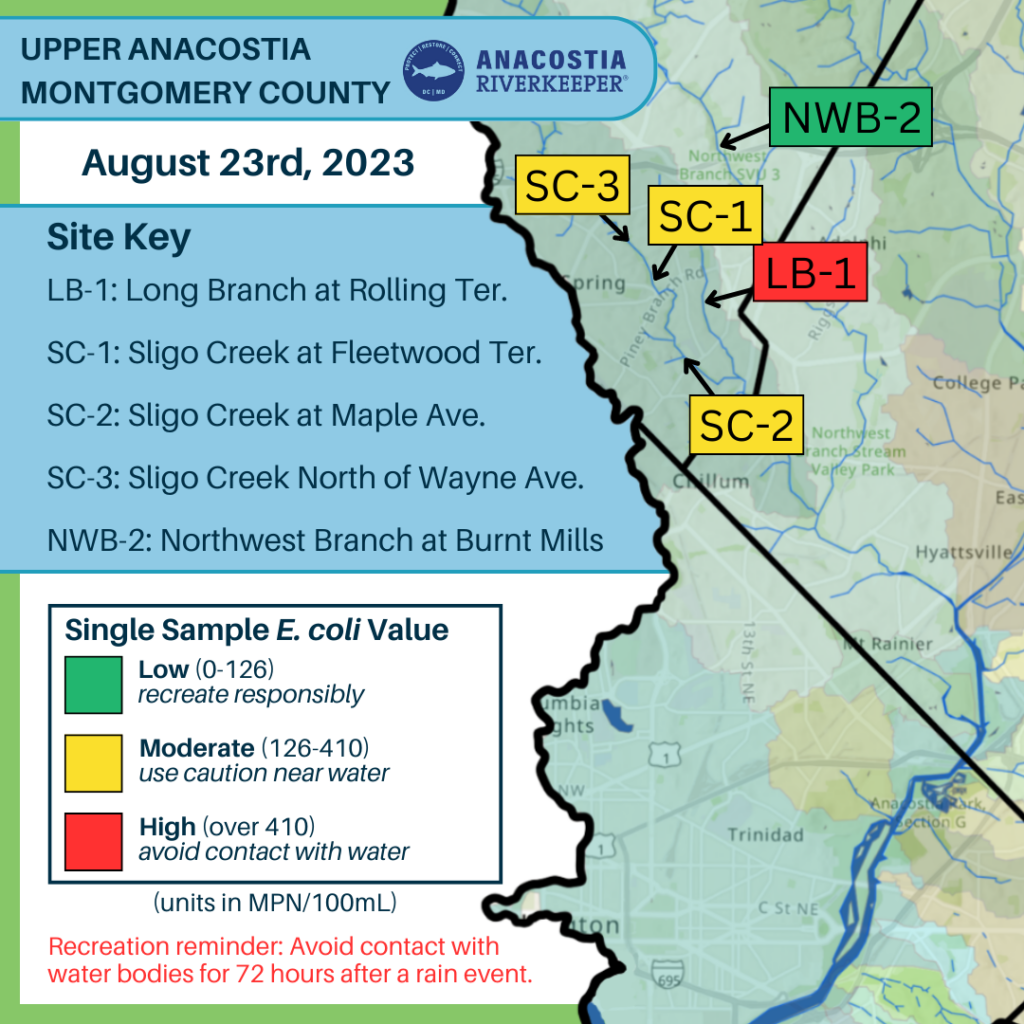
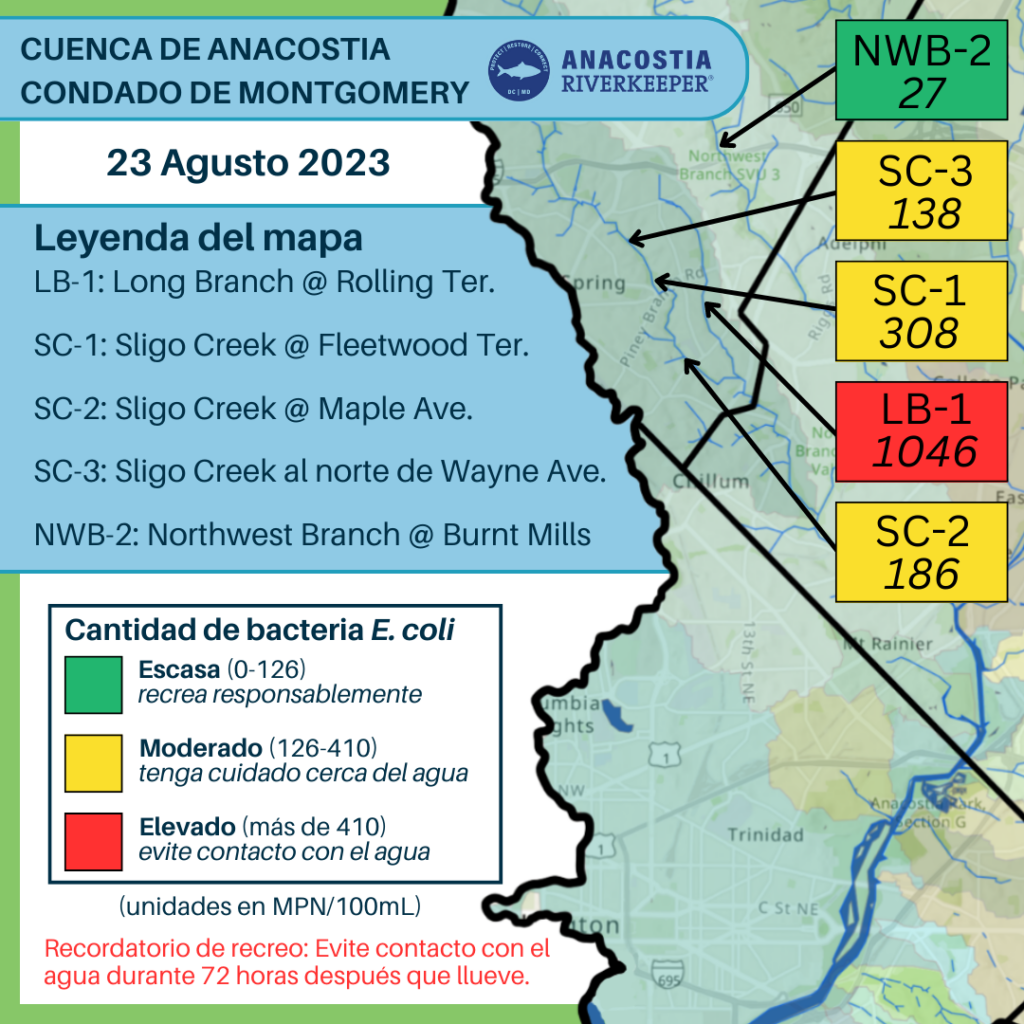
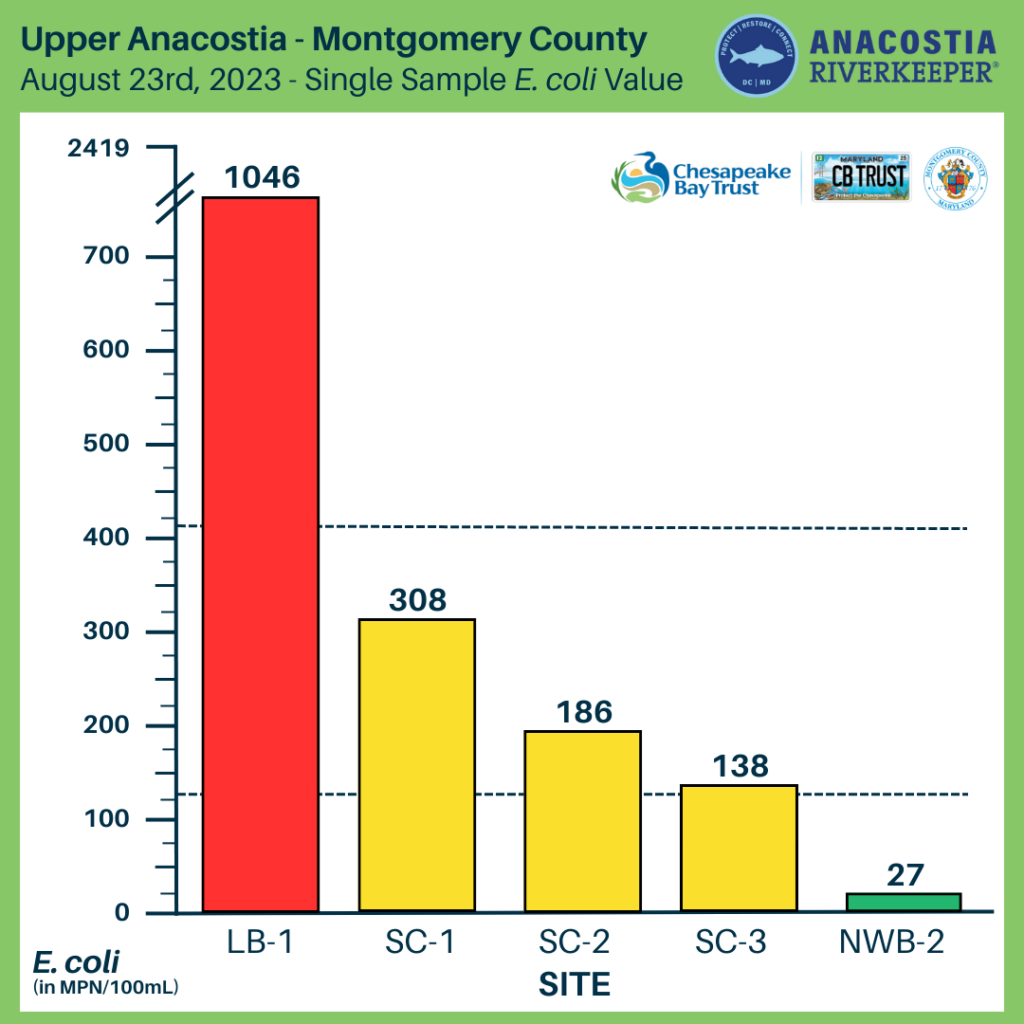
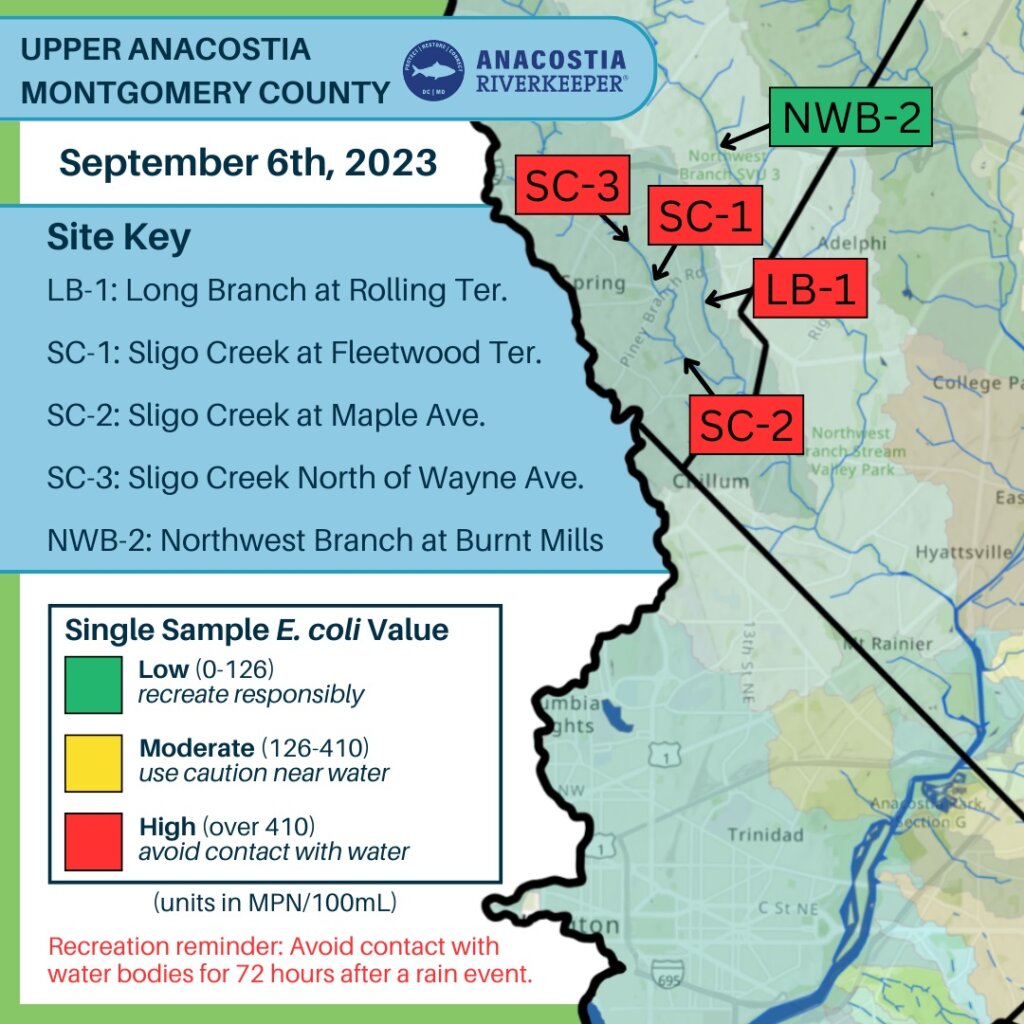
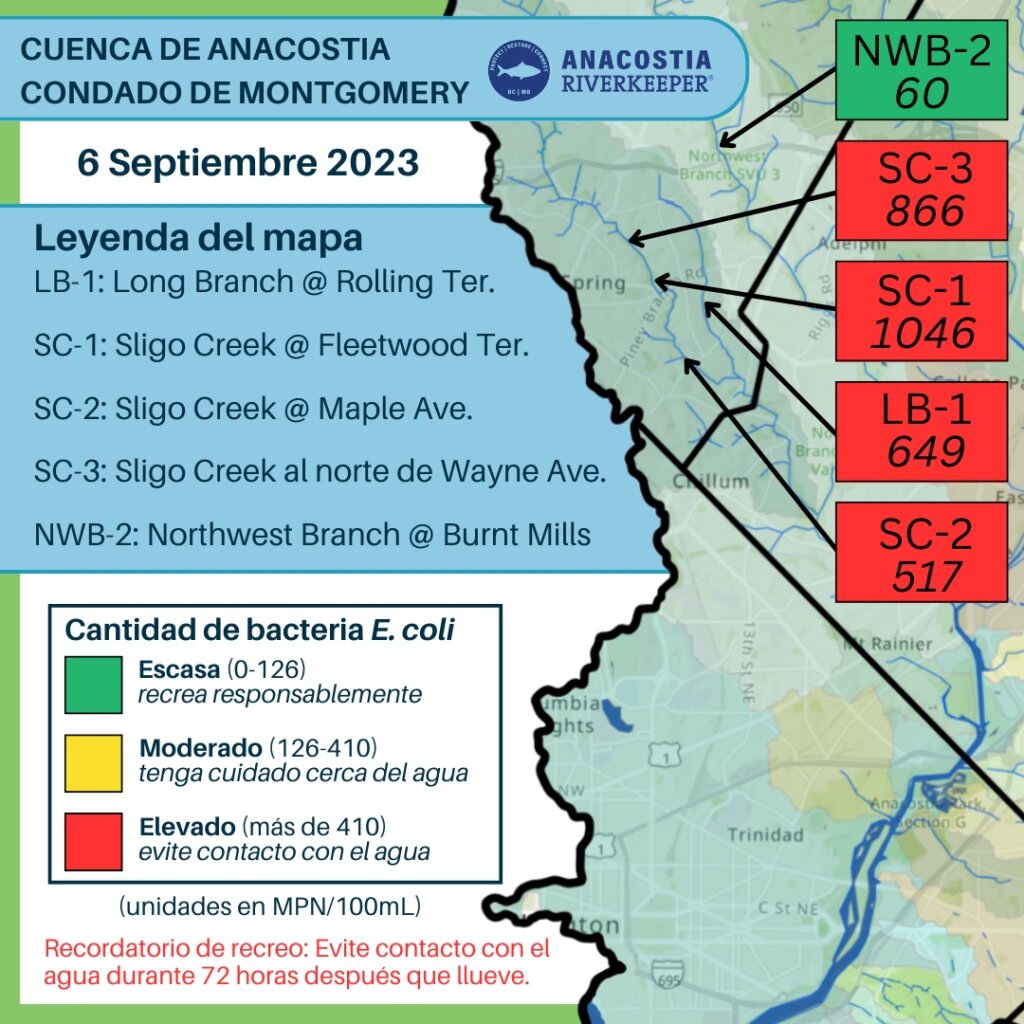
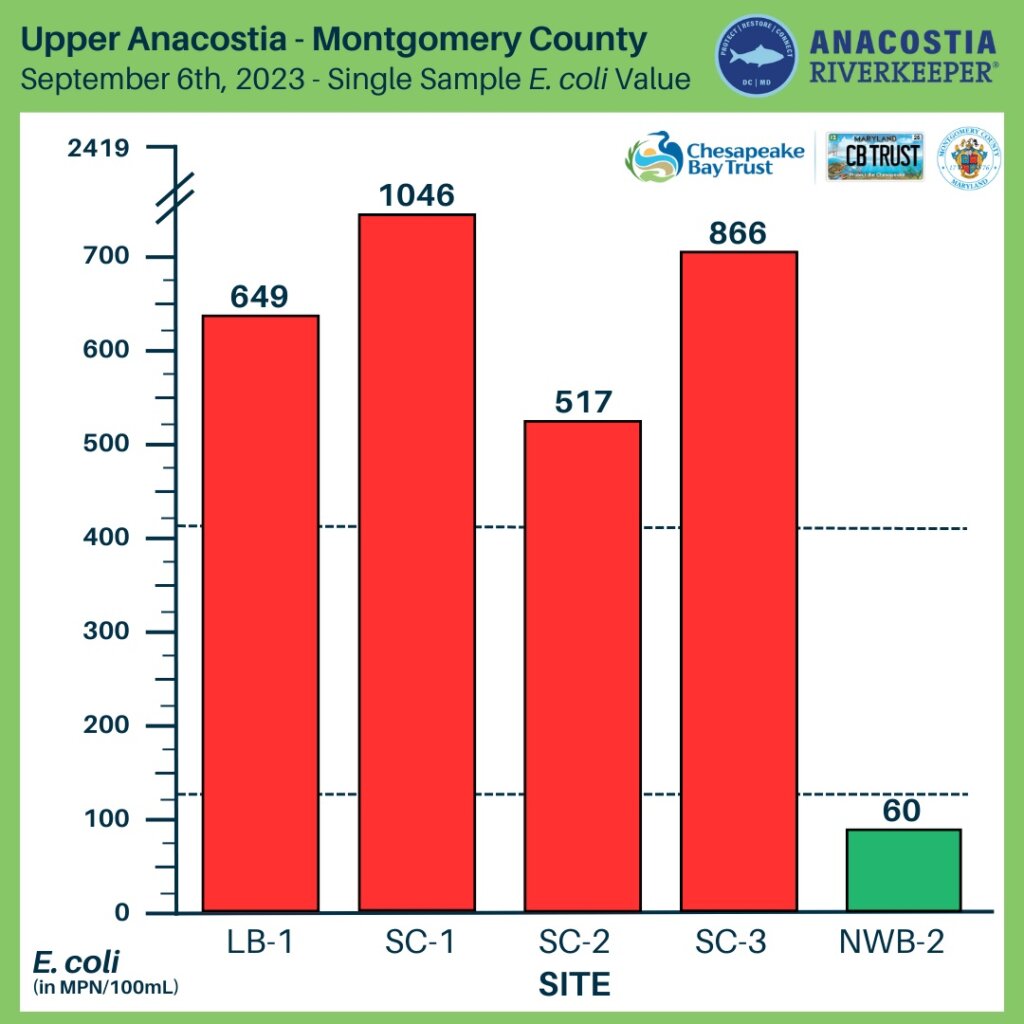
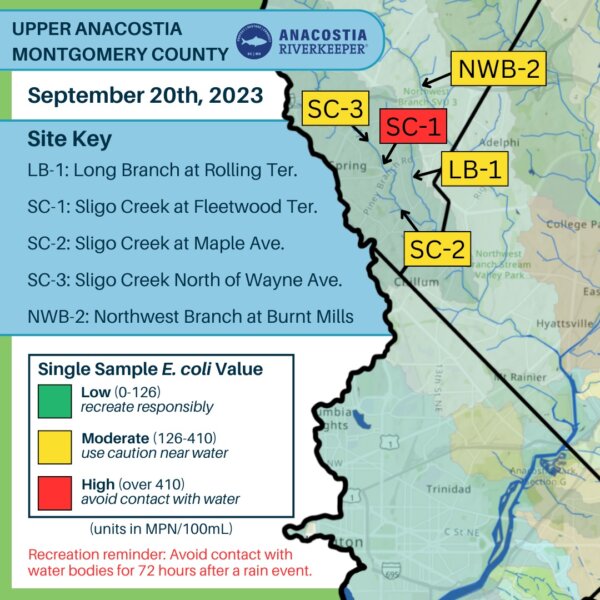
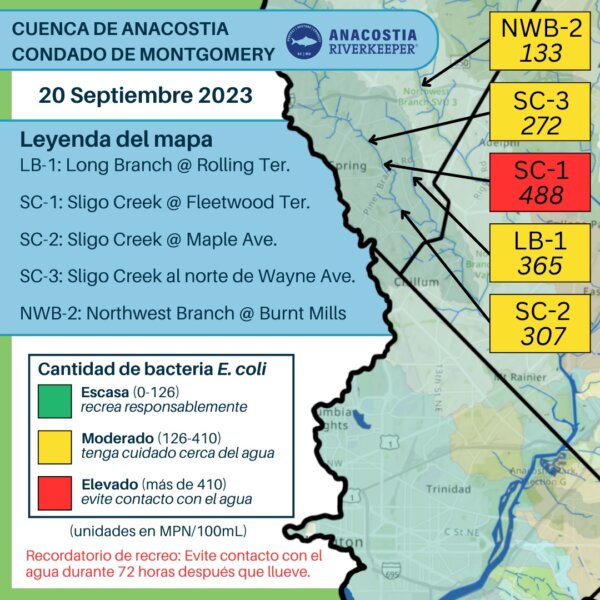
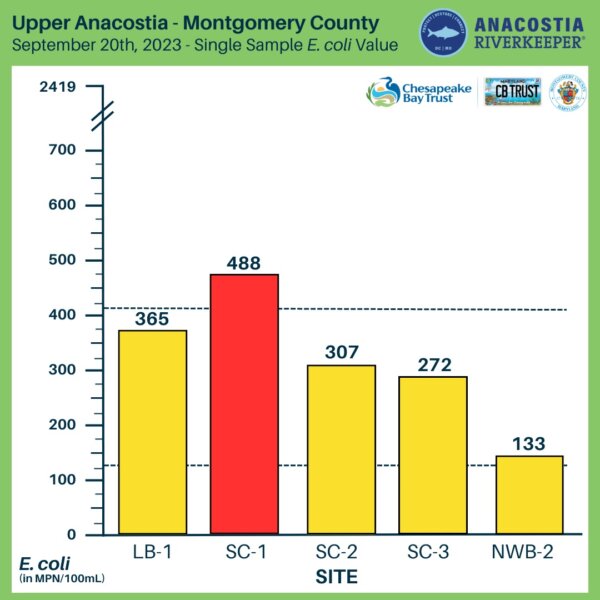
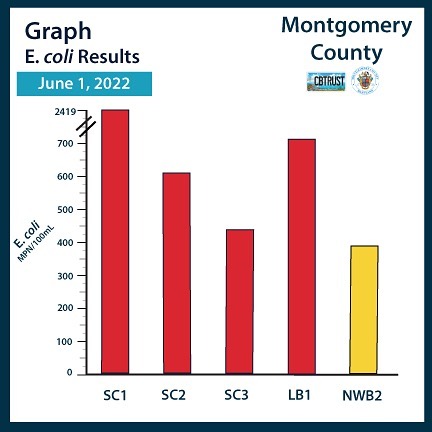
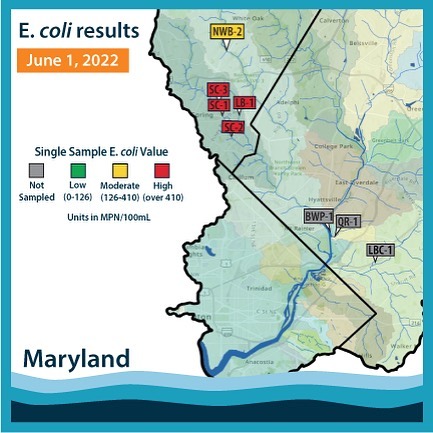
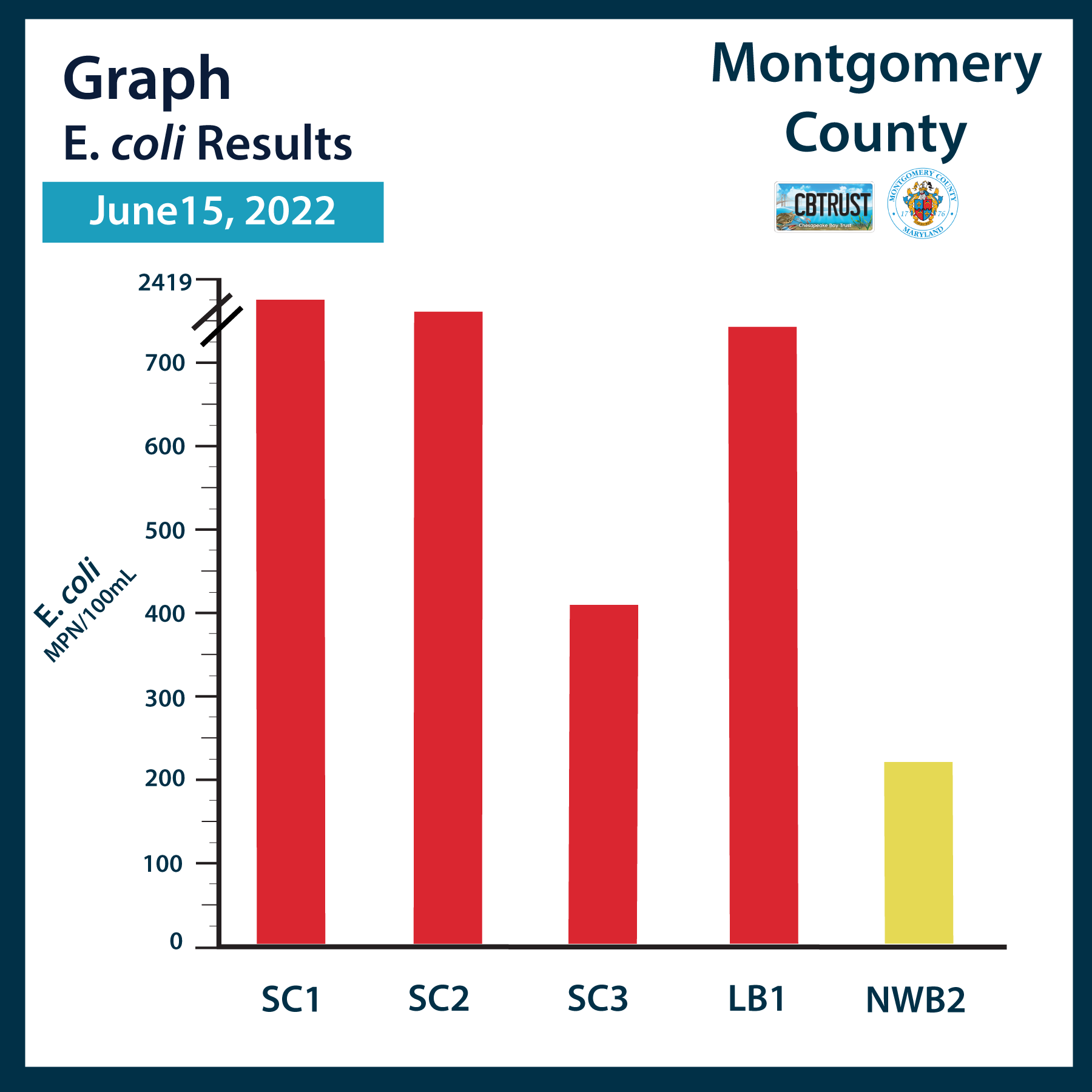
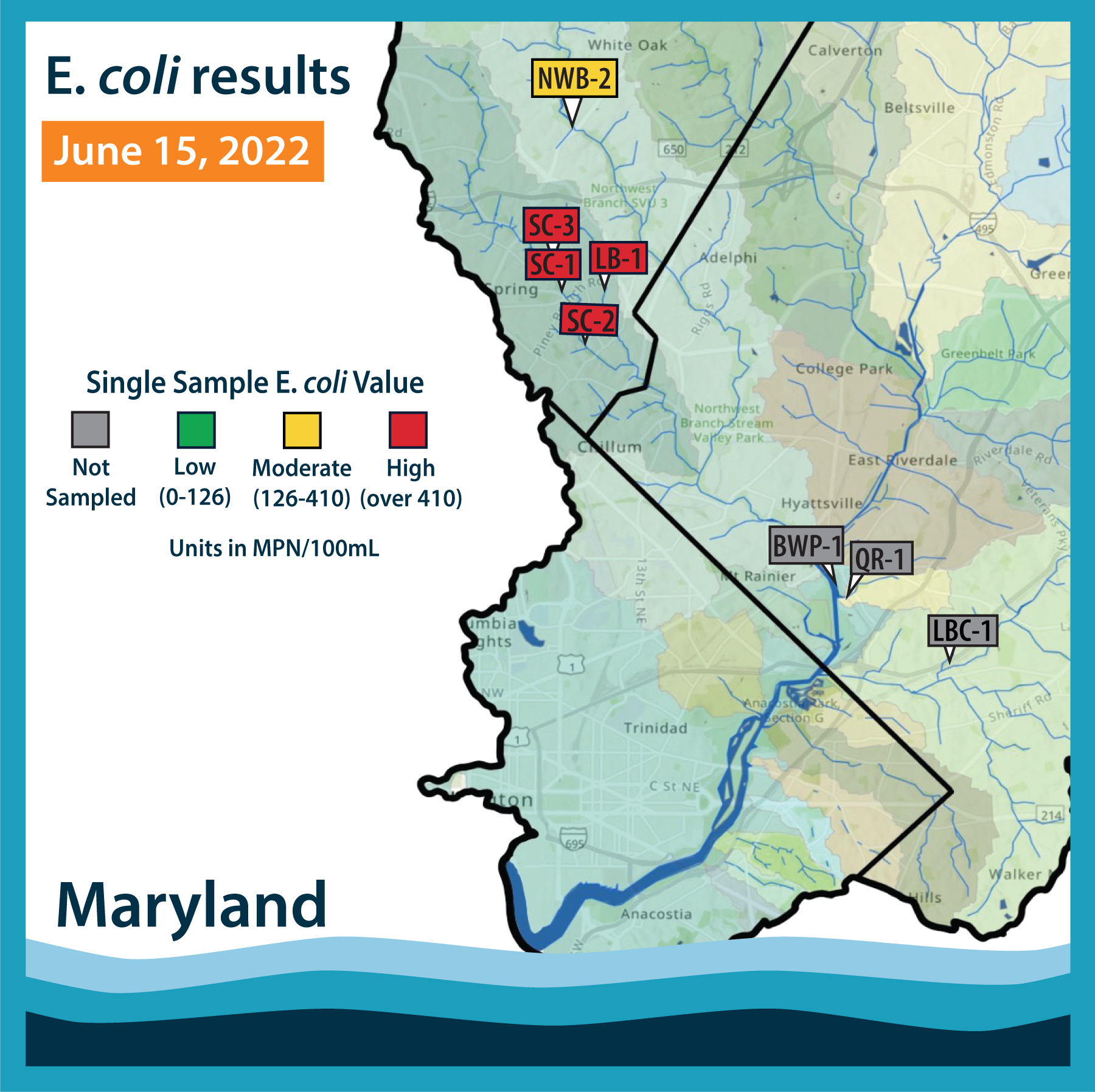
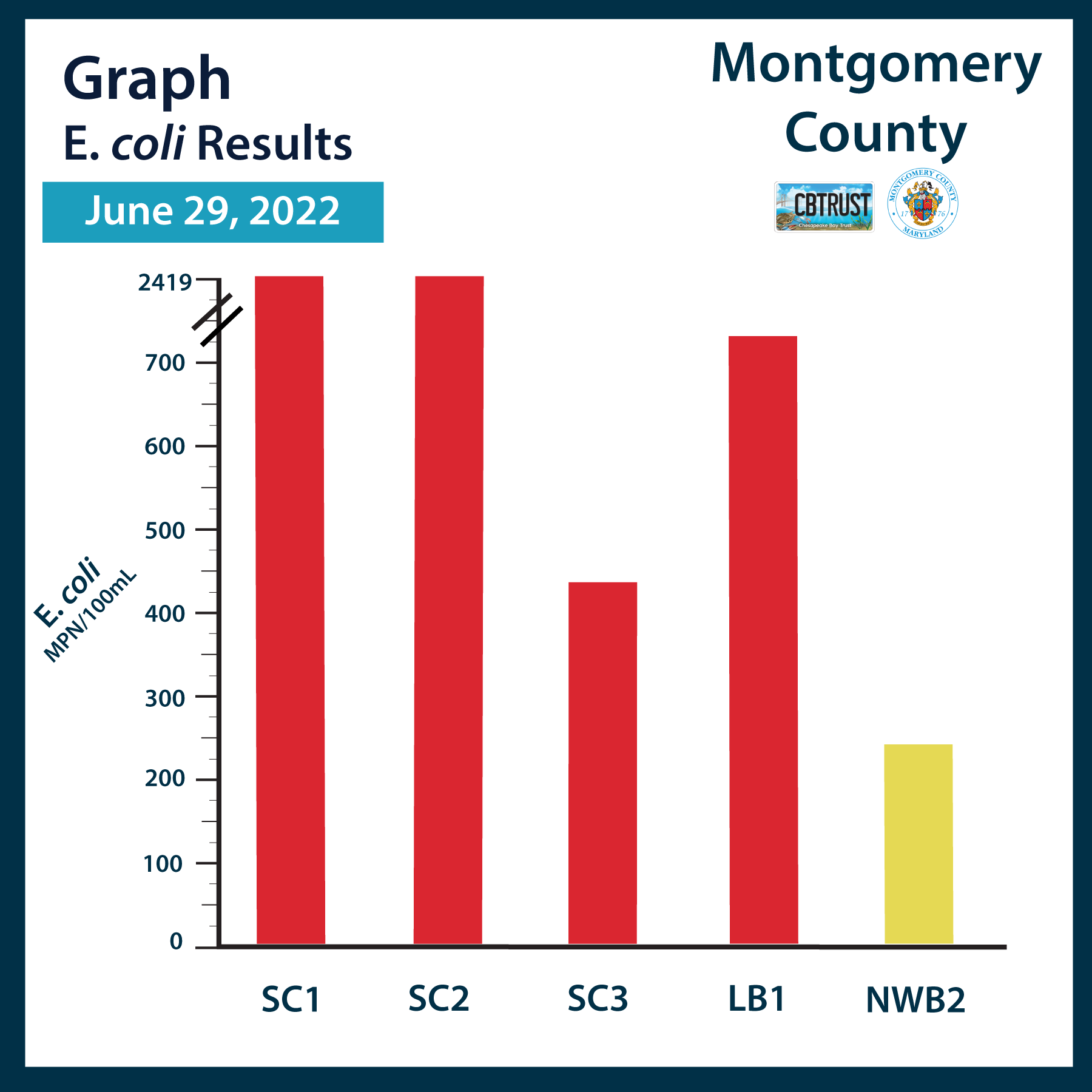
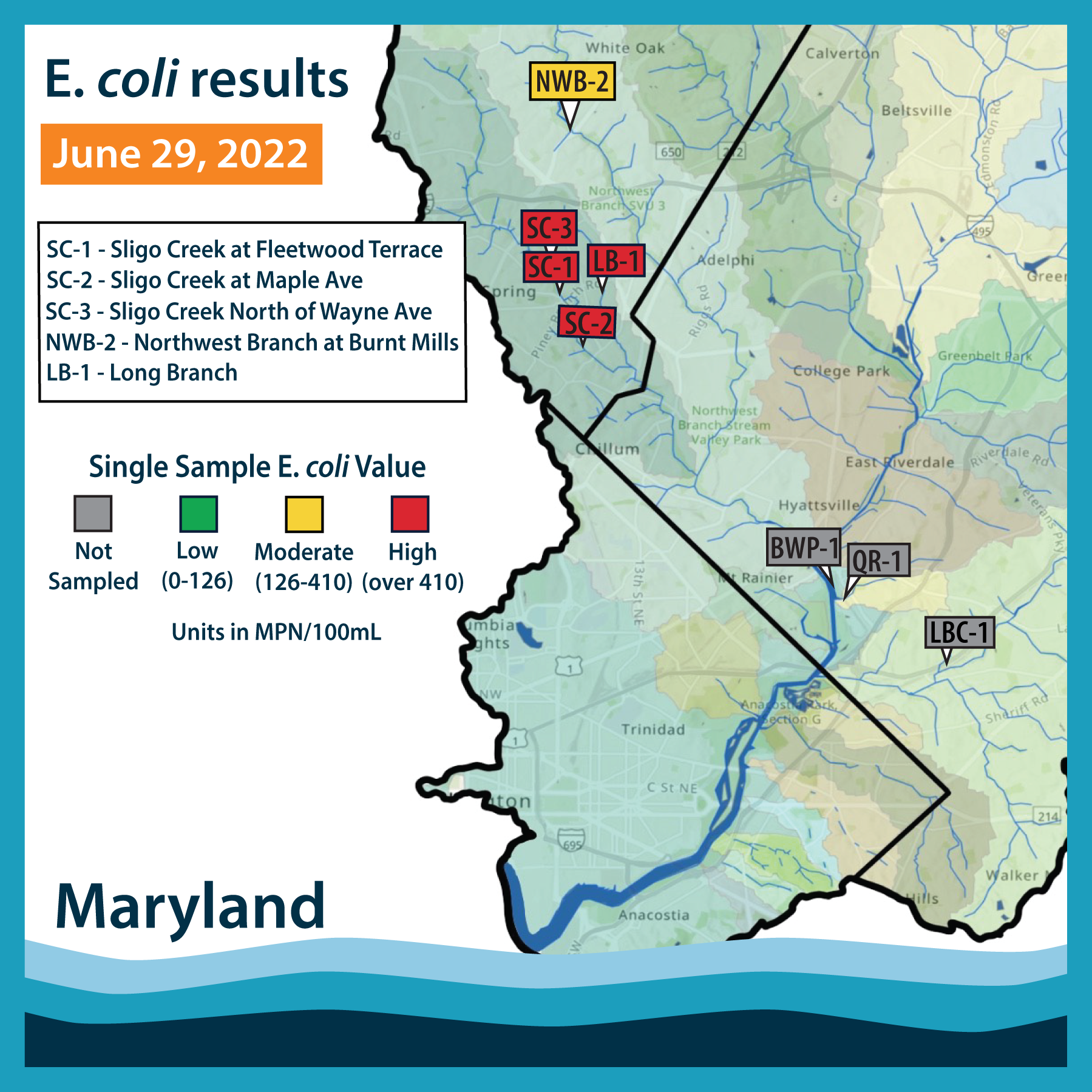
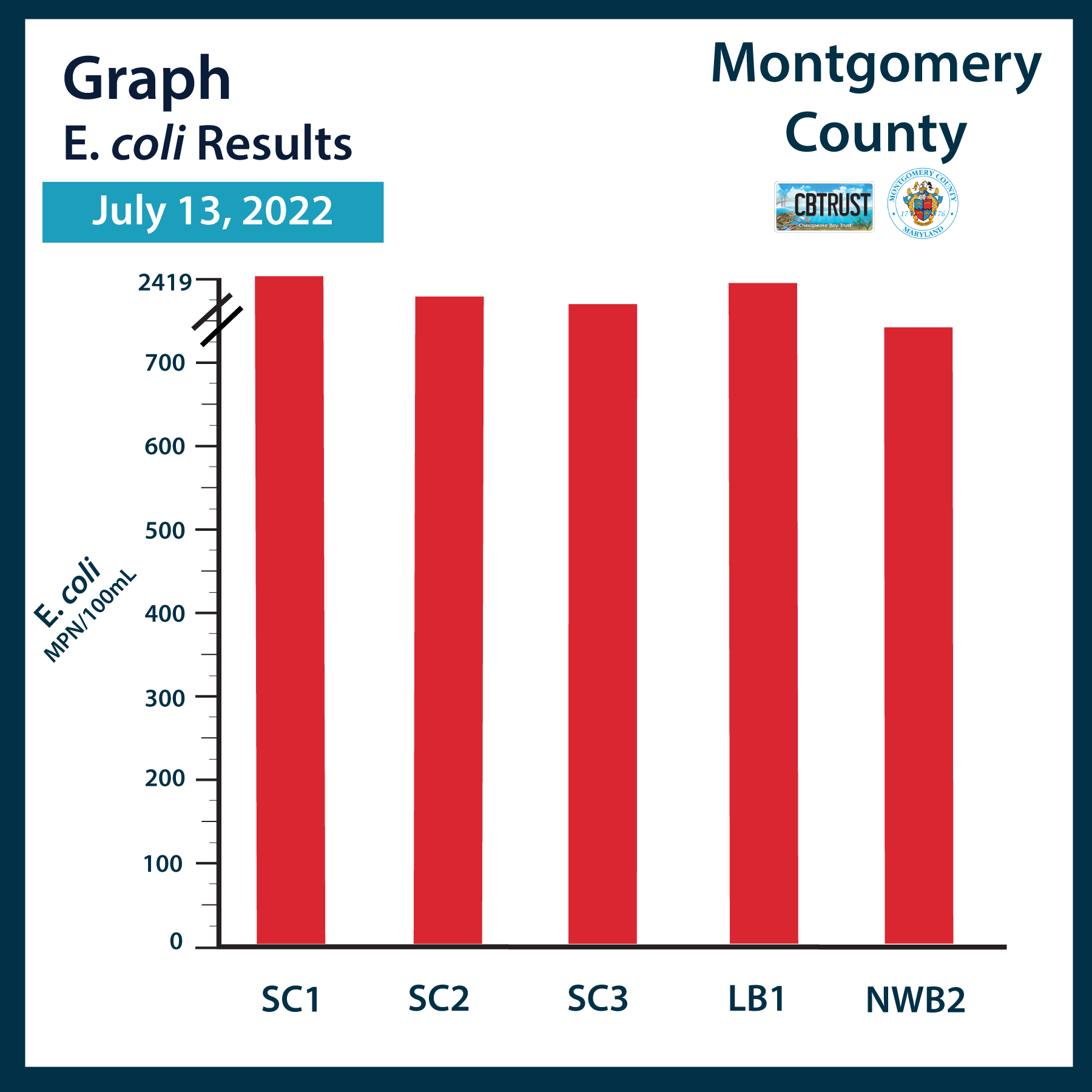
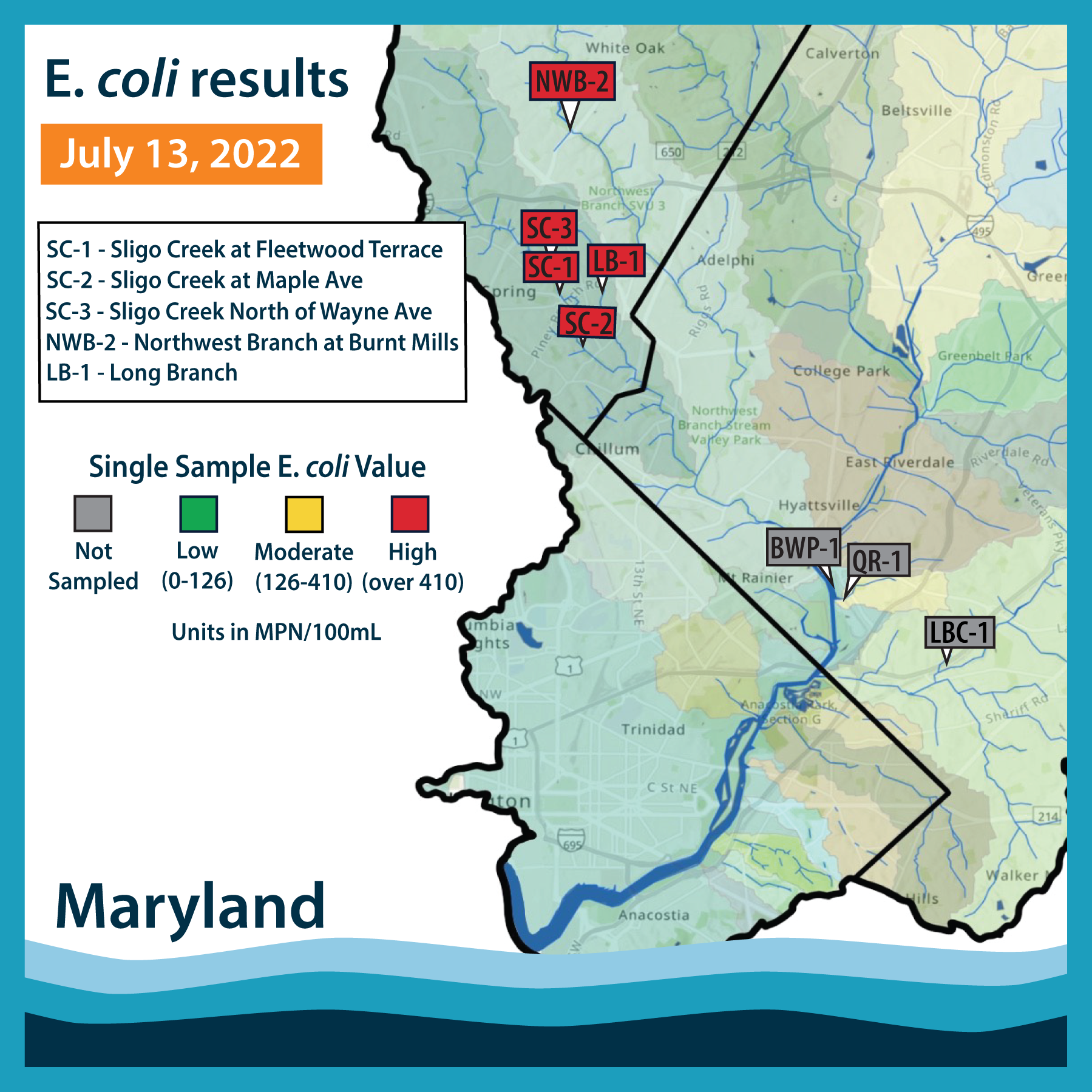
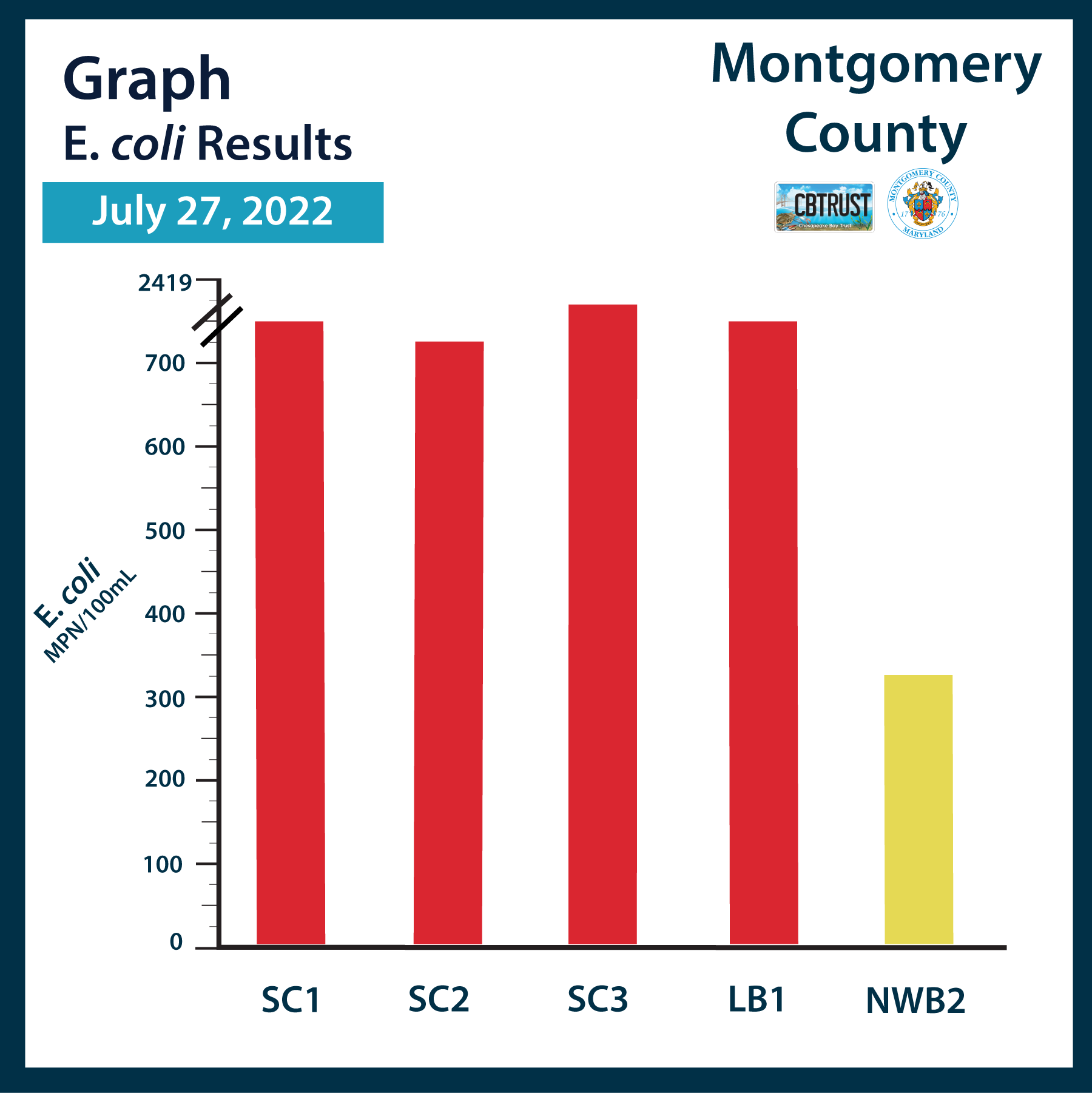
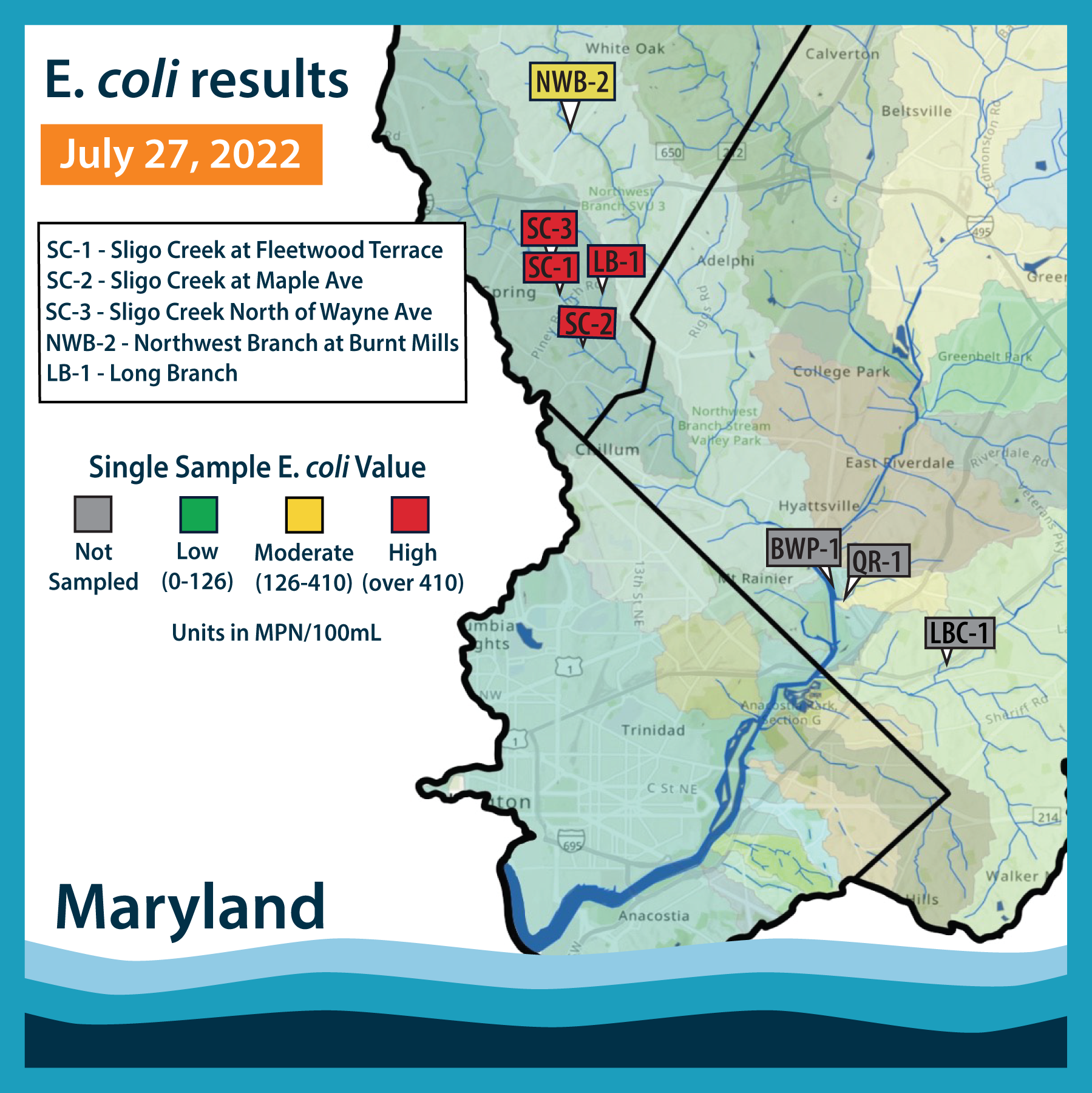
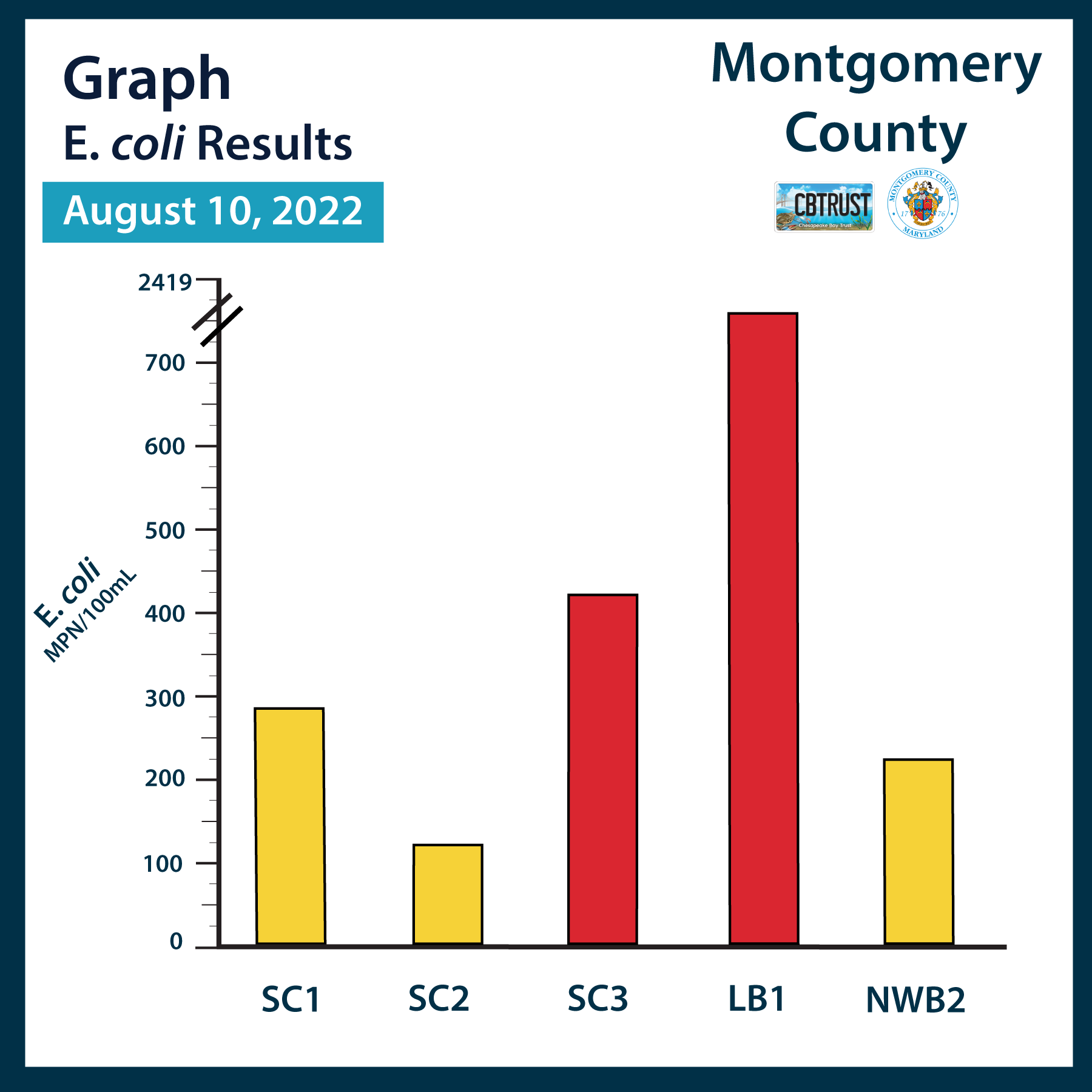
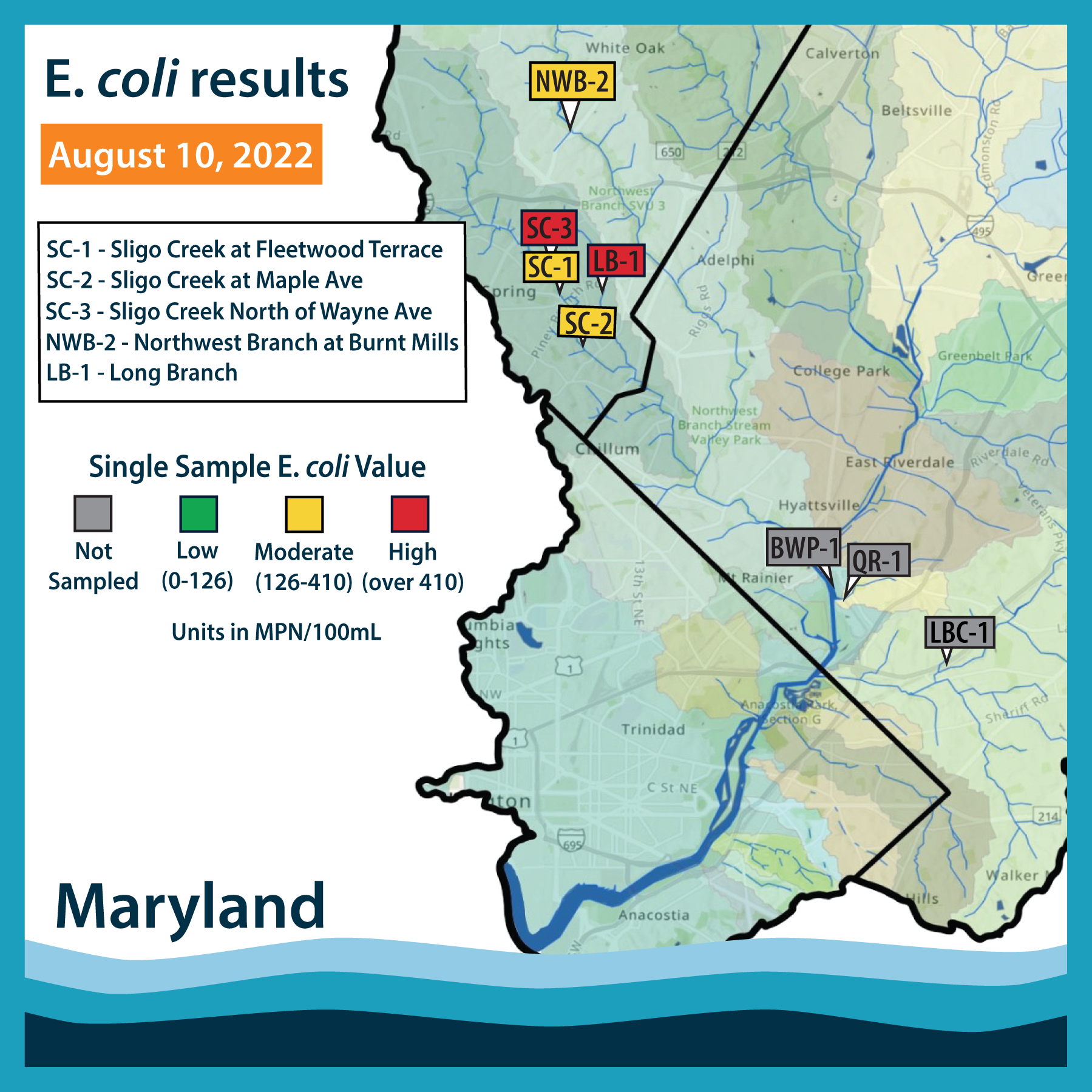
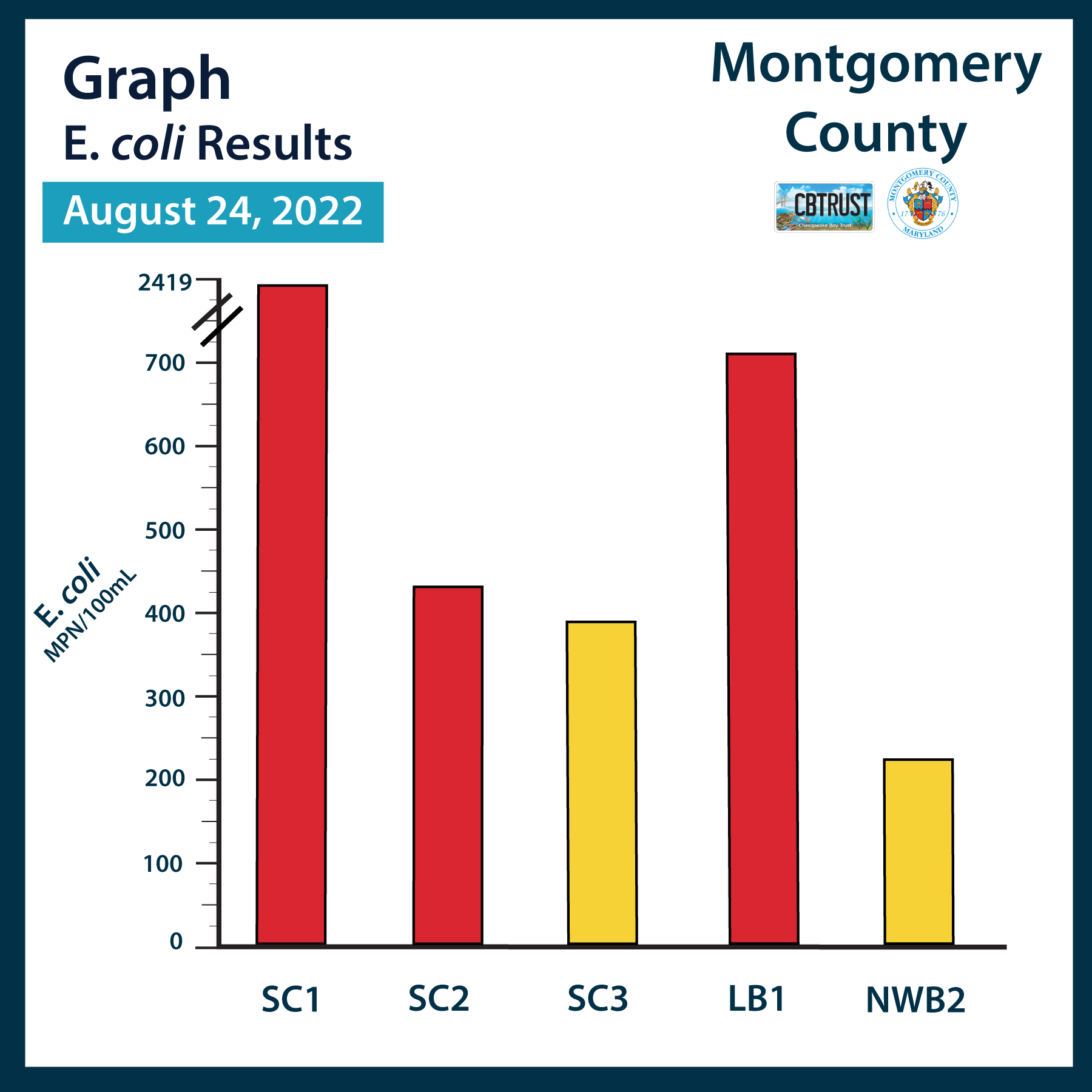
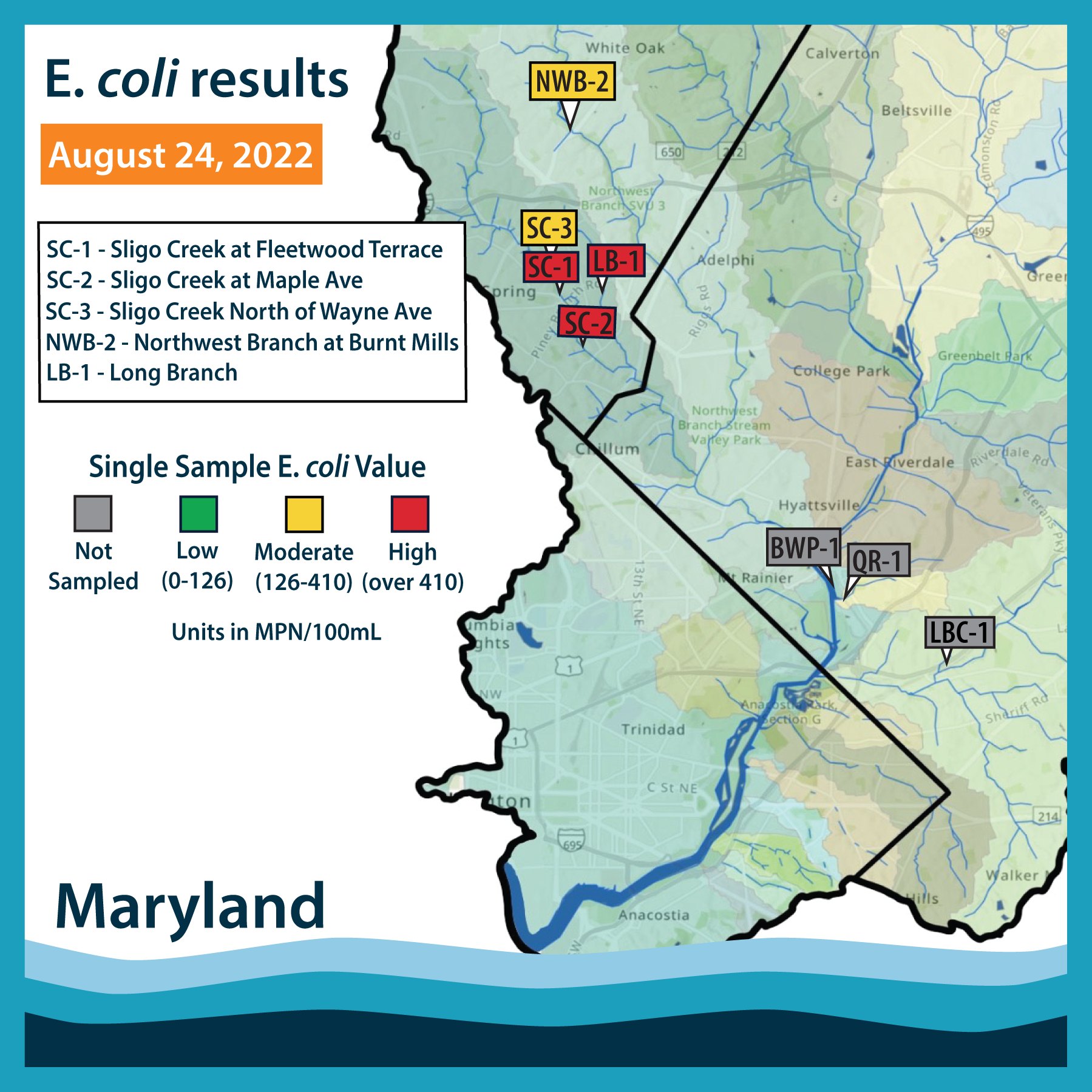
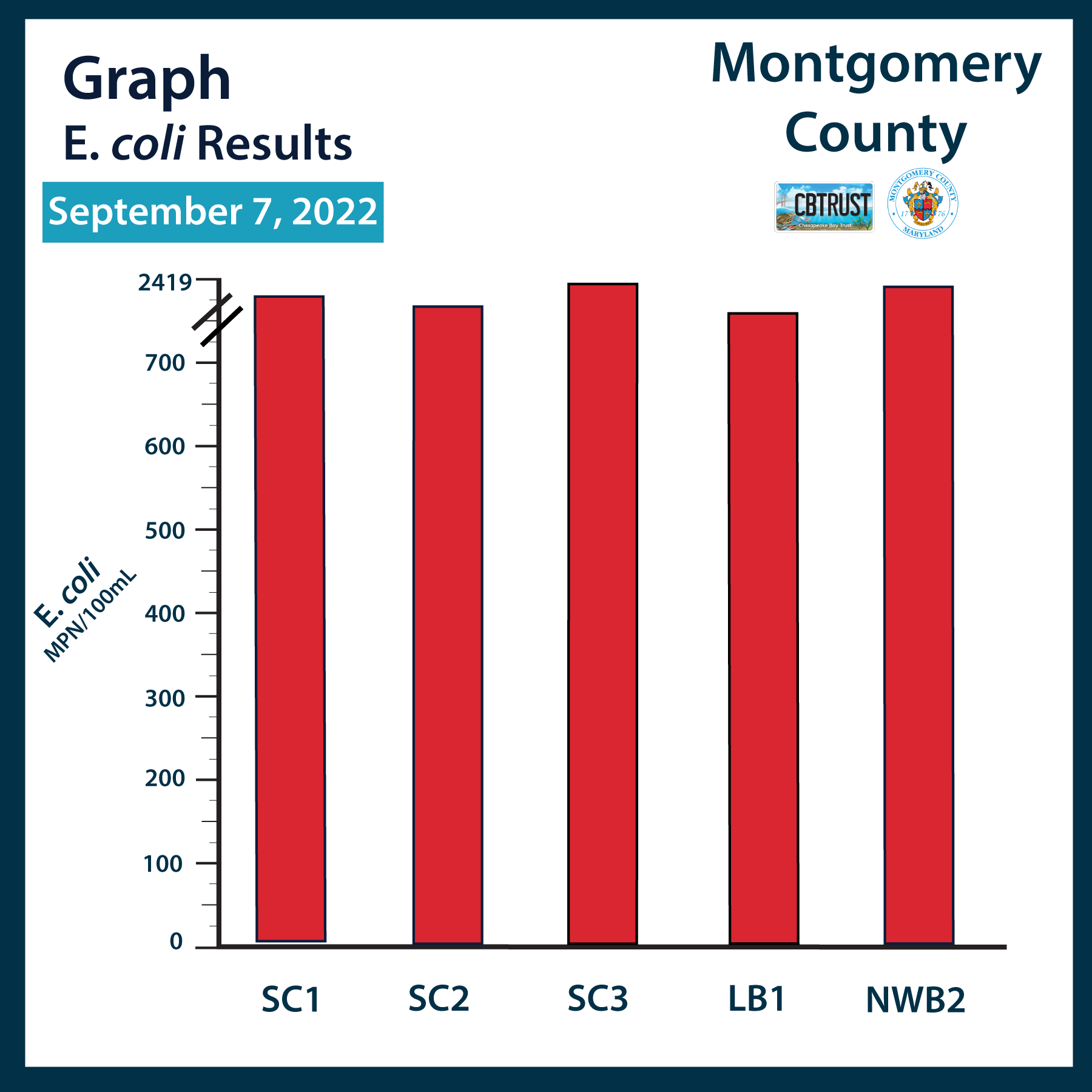
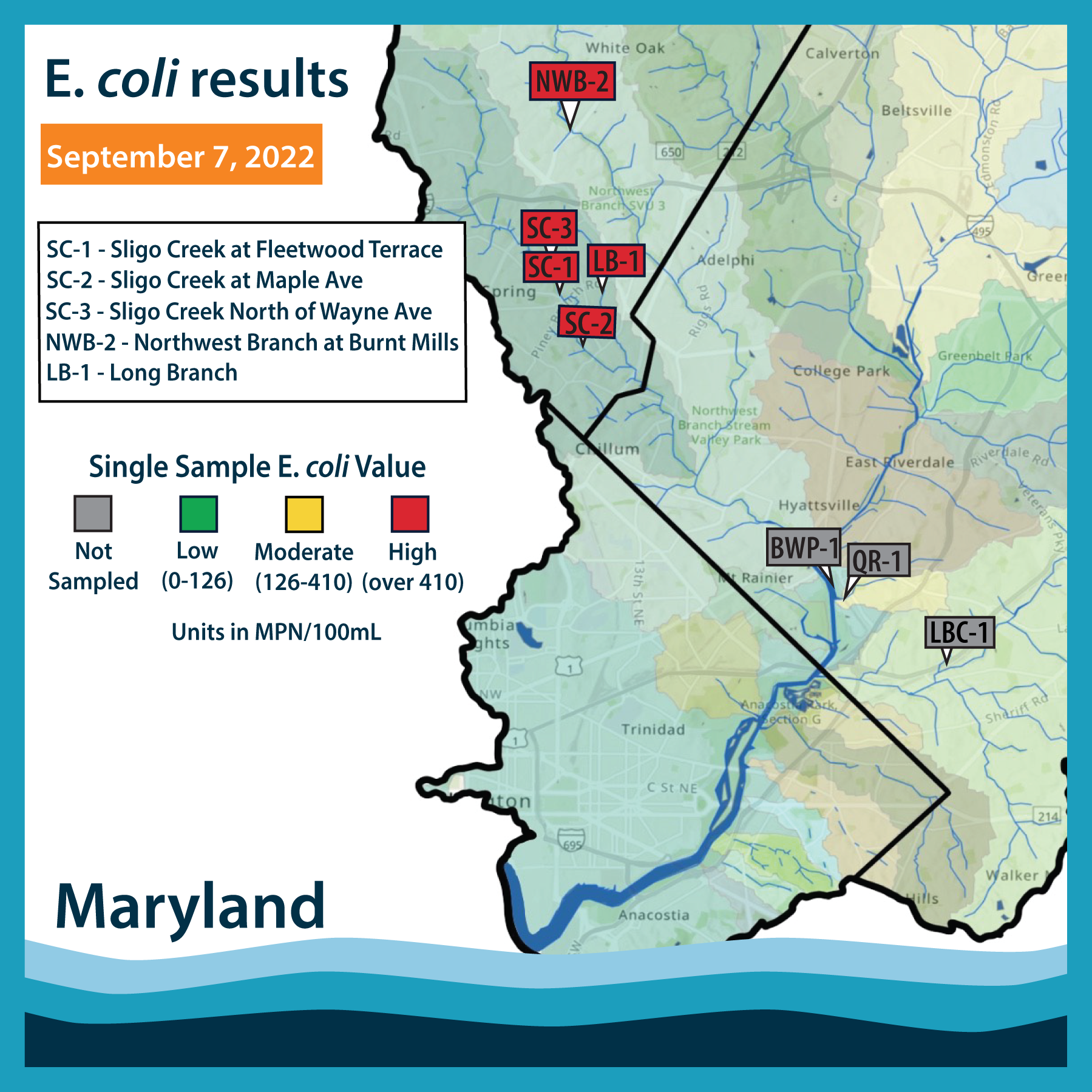
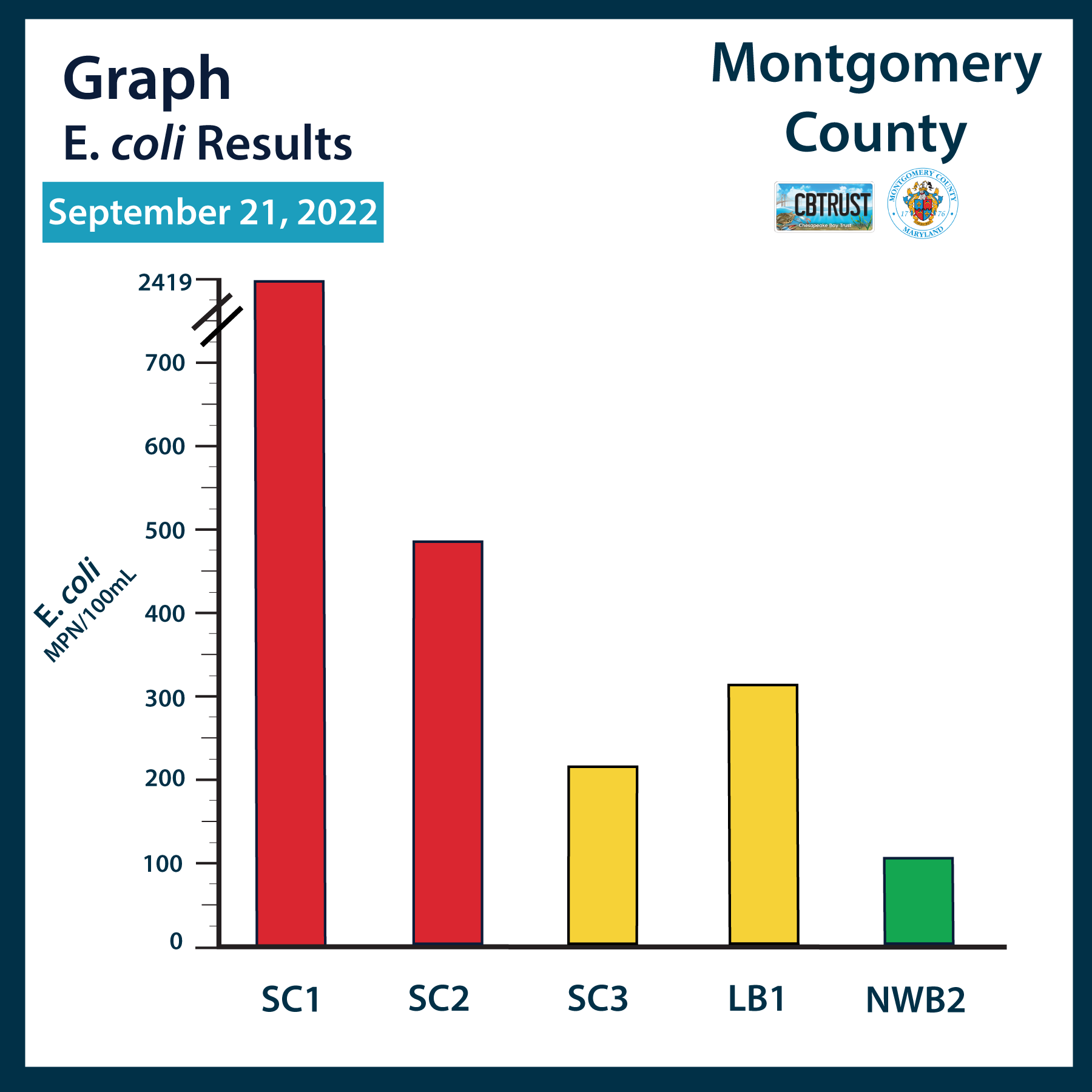
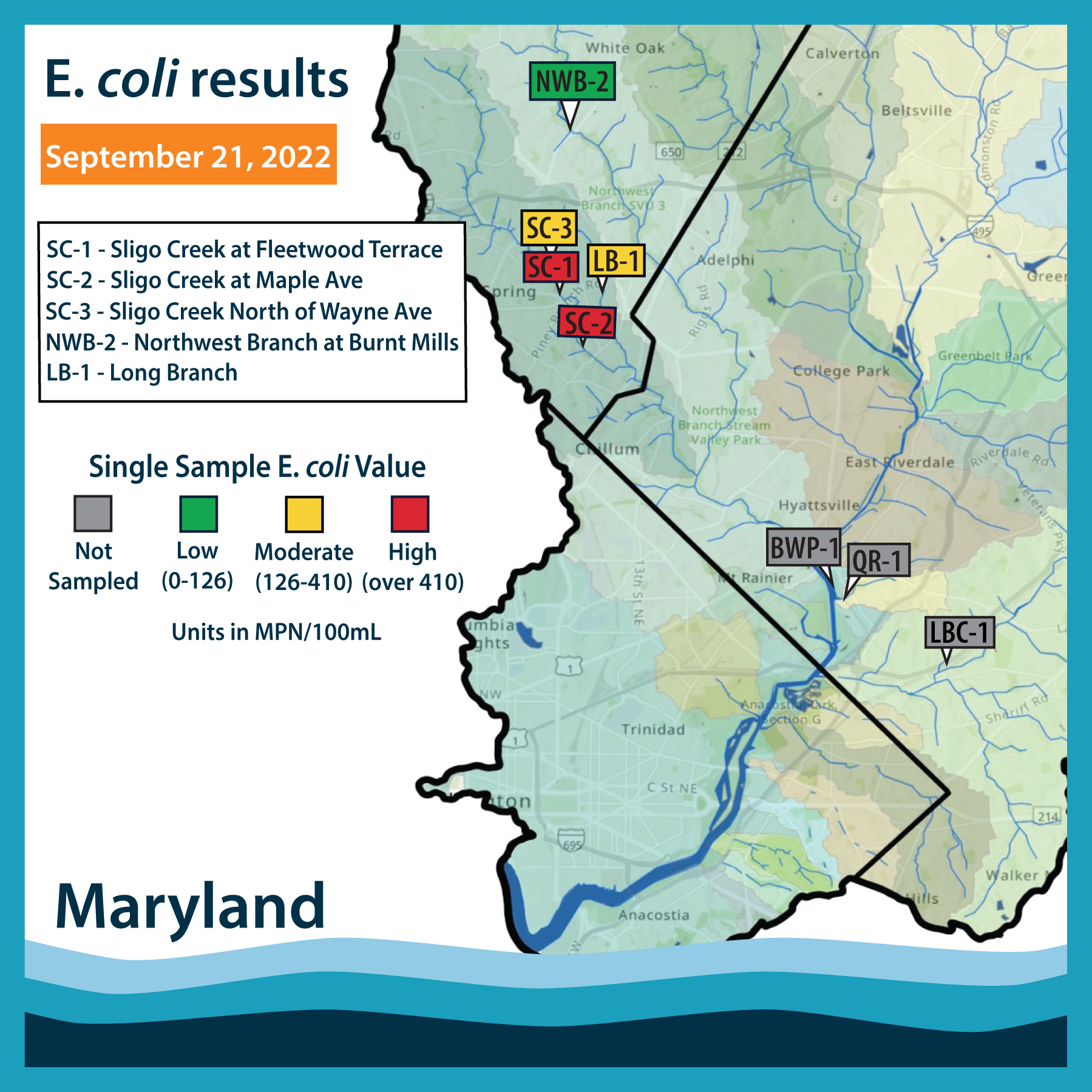
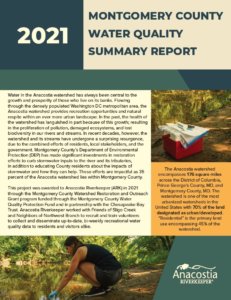 The MoCo 2021 Summary Report
The MoCo 2021 Summary Report